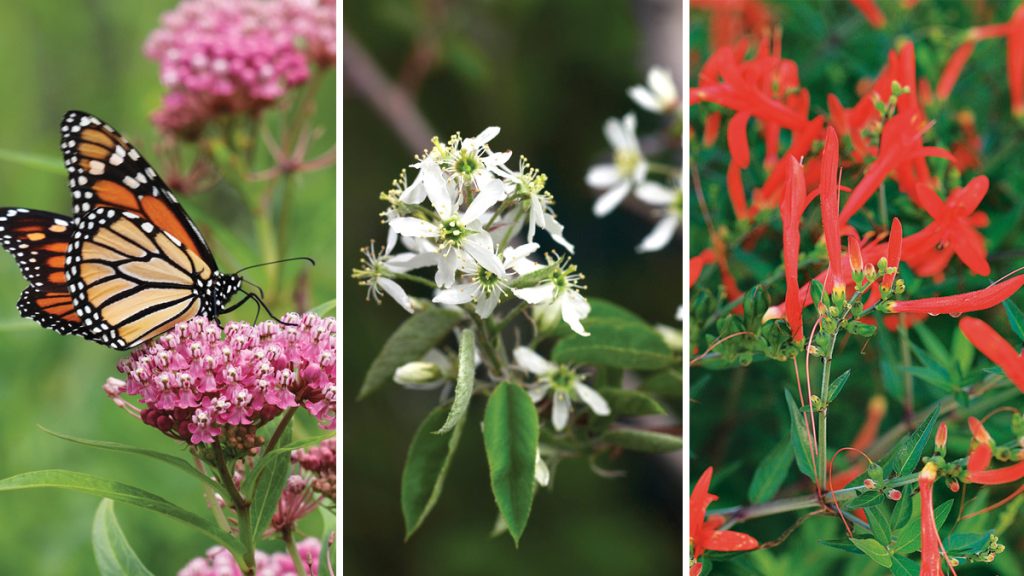When we only prioritize plants we want over plants our landscape needs, each season is filled with a never-ending list of chores: pruning, pinching, watering, treating, amending, and fertilizing, with little time to sit and enjoy the gardens you labor over. Additionally, these plants often offer minimal benefit back to our environment, outside of pretty blooms or fun foliage to admire. Gardening becomes a task of wrangling and control rather than one of tending and cooperation.
Fortunately, there are plenty of workhorse plants that give you the best of both worlds: ornamental interest along with low-maintenance and eco-friendly characteristics. Our team of regional experts have selected some great perennials, shrubs, grasses, and even a few standout trees that provide style in multiple seasons without endless fussing on your part. Explore this list of pretty, persevering powerhouses, and make the next addition to your garden a trouble-free treasure.
Pacific Northwest
Oregon sunshine
Name: Eriophyllum lanatum
Zones: 4–9
Size: 1 to 2 feet tall and wide
Conditions: Full sun to partial shade; well-drained soil
Native range: Western North America
Also called common woolly sunflower, this fantastic native perennial is widespread in the Pacific Northwest. Dancing above intricate silvery-gray foliage, its abundant golden-yellow blooms are visited by many native pollinators and butterflies from late spring to late summer. Oregon sunshine is also a larval host for several species of native butterflies and moths. It is excellent on slopes, rock gardens, and dry borders, or use it to add a splash of yellow to meadows or parking strips. When planting, side-dress with compost and keep plants watered for the first season to help them get established; no further care will be needed after that. This moderately deer-resistant beauty will thrive in almost any sunny location with good drainage.
‘Native Warrior’ Pacific Coast iris

Name: Iris × pacifica ‘Native Warrior’
Zones: 7–10
Size: 10 to 14 inches tall and 12 to 24 inches wide
Conditions: Full sun to partial shade; average to dry, well-drained soil
Native range: Hybrid of species native to the Pacific Northwest
‘Native Warrior’ Pacific Coast iris blooms from late April to June and thrives on neglect. Clumps of grassy foliage provide a great backdrop for the stunning flowers, which are tinted with red-violet and raspberry. Bees and butterflies are delighted by these blooms, and the evergreen leaves give soft ground-level texture in all seasons. Its compact habit makes it great for small gardens, on banks and slopes, as an edging plant or ground cover, or mixed with grasses and other perennials in a soothing meadow matrix. ‘Native Warrior’ naturalizes beautifully and will not be bothered by deer or rabbits.
‘Blue Gem’ mountain plum pine
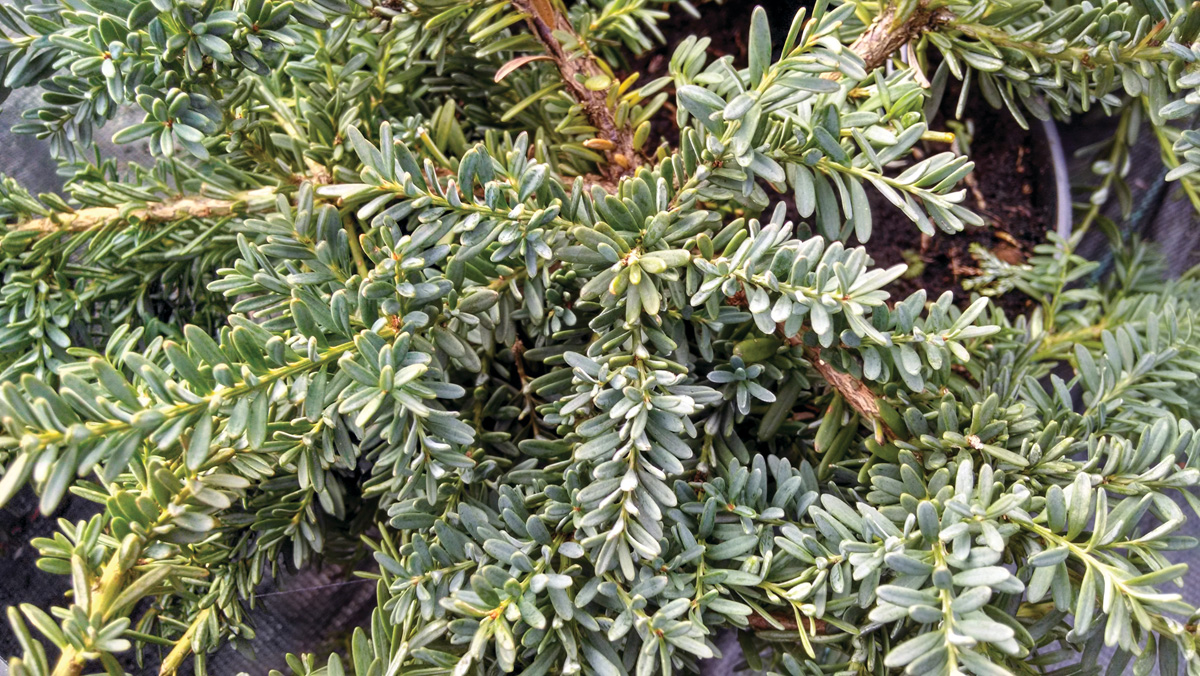
Name: Podocarpus lawrencei ‘Blue Gem’
Zones: 7–9
Size: 2 to 4 feet tall and 8 to 12 feet wide
Conditions: Full sun to partial shade; well-drained soil
Native range: Southwest Australia and Tasmania
This selection of an adaptable dwarf evergreen conifer hails from the highest elevations of Tasmania. It is hardy enough to thrive in the Pacific Northwest, in addition to being long-lived and easy to grow. ‘Blue Gem’ offers fine-textured, bright blue-green foliage, with short yew-like leaves alternately spaced along the shoots. Low, arching branches and a dense mounding habit make it useful in many garden situations, and it is particularly effective as a low hedge. Adapting readily to both sand and clay, it is drought tolerant after the first season. It thrives in hot sun, developing a slightly more open habit in light shade, and also has good deer, rabbit, slug, and snail resistance.
Silverleaf oak
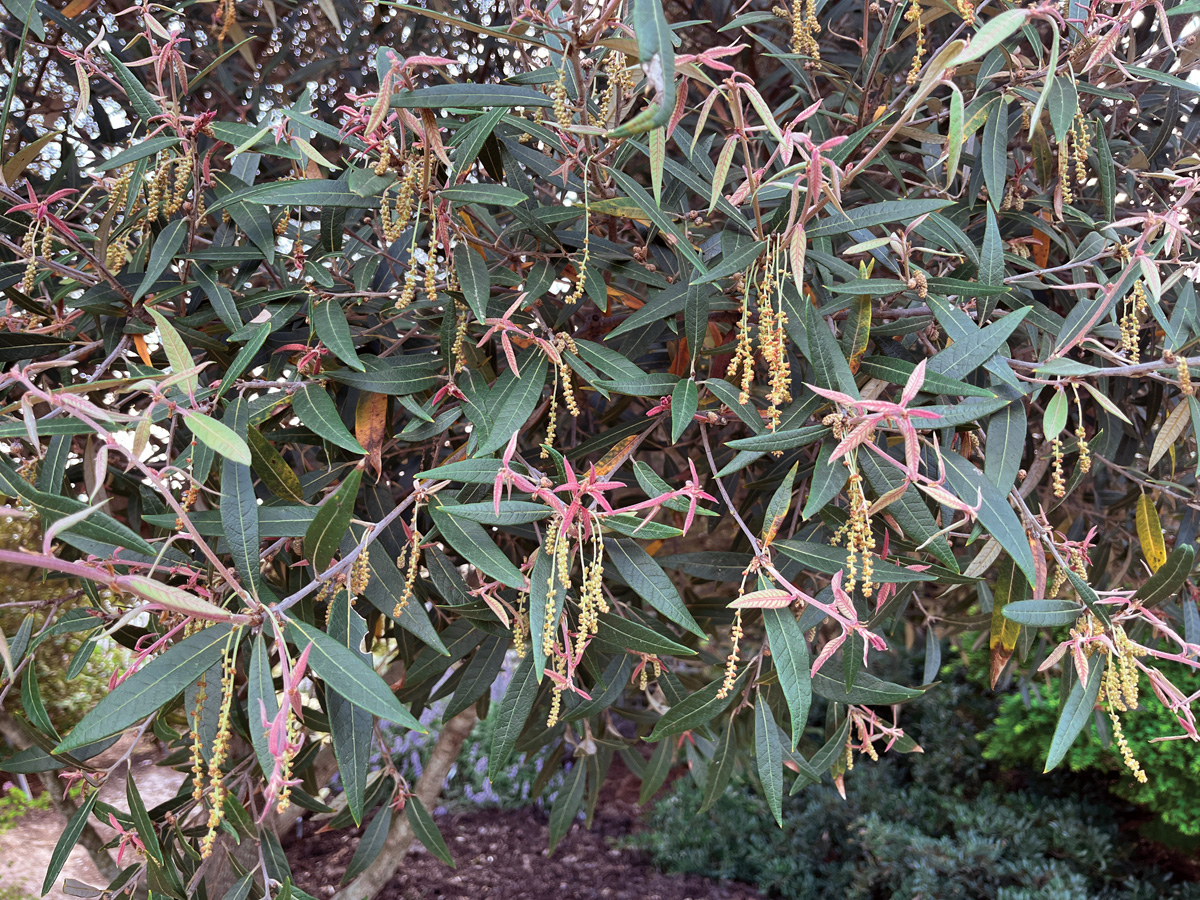
Name: Quercus hypoleucoides
Zones: 7–10
Size: 18 to 35 feet tall and 15 to 25 feet wide
Conditions: Full sun; lean, well-drained soil
Native range: Northern Mexico and southwestern United States
Native to very high-elevation terrain, this striking evergreen oak is a wonderful landscape choice for our evolving climate. It is fast growing, developing a straight trunk and a tall, rounded shape. In time it will cast dense shade, so site it wisely. The narrow leaves are leathery, shiny, and sage-green on top, with dazzling silver on the undersides. Striking gold catkins appear in spring, and the leaves’ upper surfaces can turn maroon in cold temperatures. Like other native oaks, it provides many ecosystem benefits. It is appreciated by birds and resistant to pests and diseases. With multiple seasons of interest, silverleaf oak makes an exquisite garden specimen or street tree.
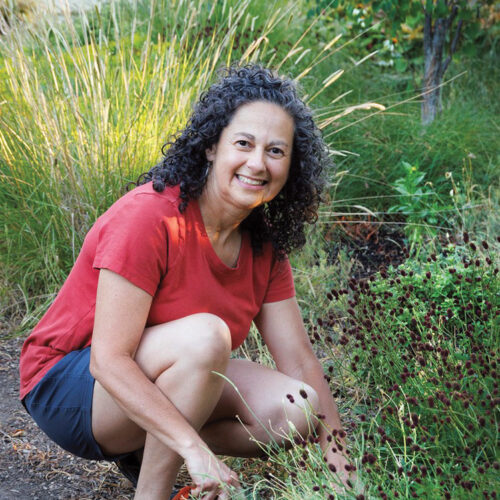
Regional expert: Adriana Berry is the owner and lead designer at Plant Passion Design in Portland, Oregon.
Southwest
Texas firecracker
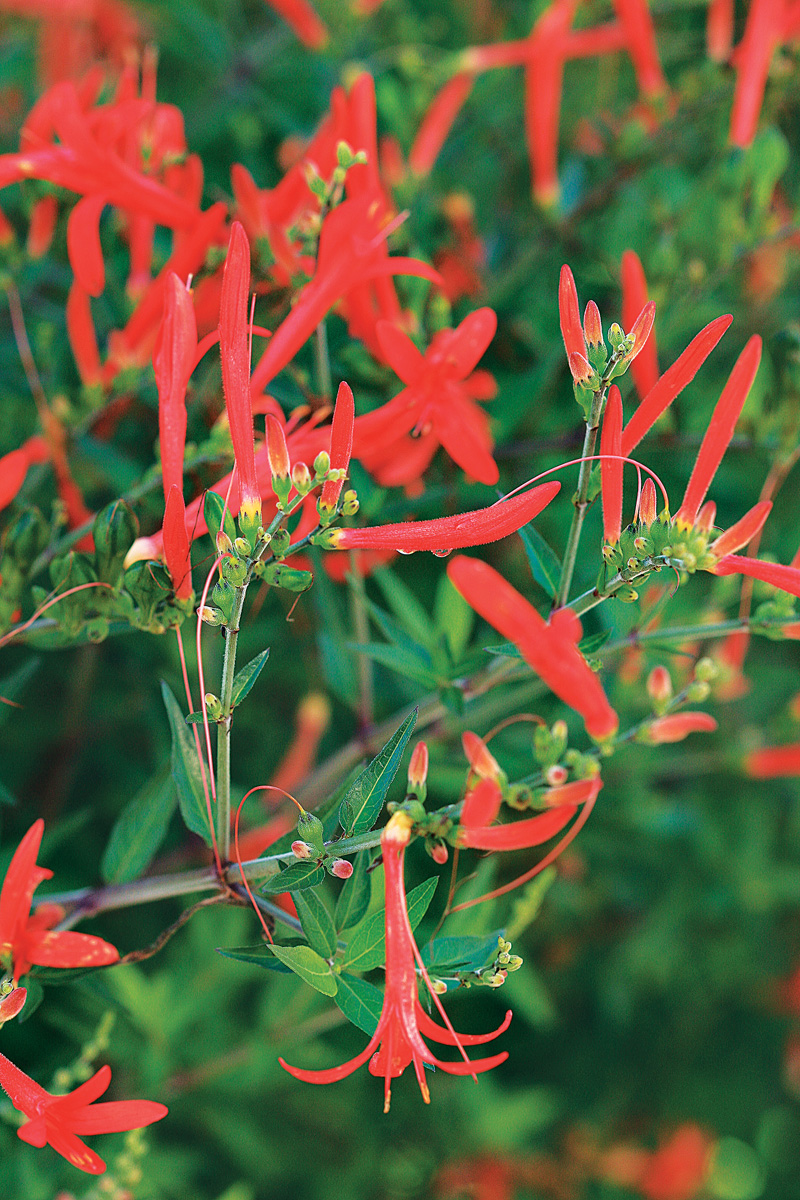
Name: Anisacanthus quadrifidus var. wrightii
Zones: 7–10
Size: 3 to 5 feet tall and 3 to 4 feet wide
Conditions: Full sun; average to dry, lean, well-drained soil
Native range: South central Texas and adjacent northern Mexico
Also called hummingbird bush, this deciduous shrub is the star of my summer garden. From June through October, the plants are covered with red-orange blooms filled with sweet nectar that hungry hummingbirds and butterflies find irresistible. The plants rarely require supplemental irrigation to keep the show going. This adaptable shrub tolerates heavy clay and will also thrive in poor, rocky soil. The woody stems will die back to the ground in colder parts of the plant’s range; remove the old stems in winter, and new growth will quickly replace them. In warmer areas, cut plants back hard every few years to manage the size. It’s a perfect choice for adding lasting color to mixed borders, rock gardens, or containers.
Blackfoot daisy
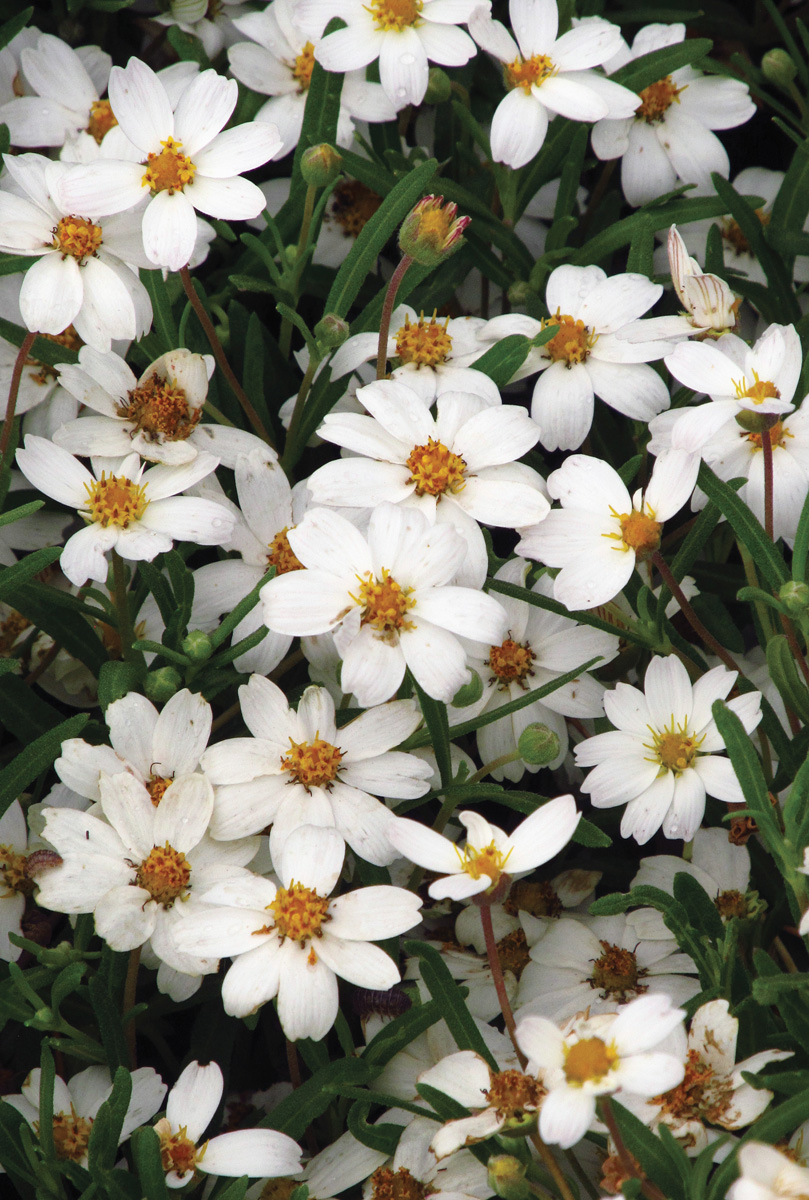
Name: Melampodium leucanthum
Zones: 5–11
Size: 10 to 12 inches tall and 12 to 20 inches wide
Conditions: Full sun; lean, dry, well-drained soil
Native range: Southwestern United States and northern Mexico
Few perennials flower for as long as blackfoot daisy does. With adequate rainfall or a bit of supplemental moisture, it will bloom nonstop from spring through fall. The one-inch white blossoms with honey-sweet perfume cheerfully cover the plants throughout the season, attracting native bees and butterflies. Songbirds frequently feast on the seeds, while deer and rabbits leave the low mounds of gray-green evergreen foliage alone. Found naturally on rocky slopes, this heat- and drought-tolerant native is perfect for rock gardens and xeric landscapes. Plant it on your most challenging spot, but don’t overwater it.
Showy penstemon
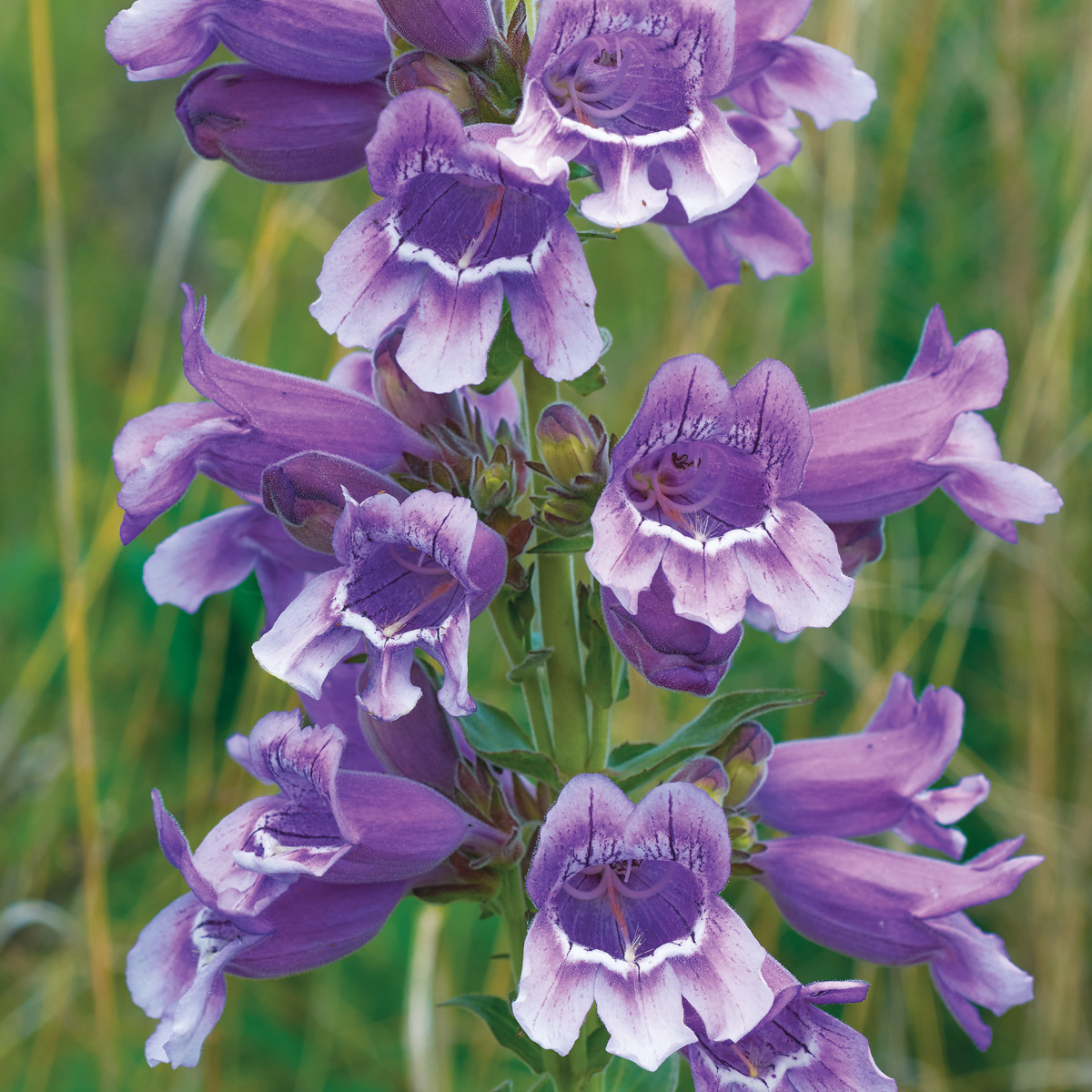
Name: Penstemon cobaea
Zones: 4–8
Size: 16 to 30 inches tall and 12 to 18 inches wide
Conditions: Full sun; dry to medium, lean to average, well-drained soil
Native range: South central United States
The dramatic floral display of this native perennial aptly earns it its common name. Each plant produces numerous flowering stems from a basal rosette of bright green leaves. Flower spikes are packed with rose-purple blooms from mid to late spring, drawing in bumblebees and butterflies. Showy penstemon makes a gorgeous addition to sunny borders, pollinator gardens, and meadow plantings. It will adapt to almost any soil that drains well, from sandy sites to limestone outcroppings and loamy plains. Avoid wet and poorly drained soil and heavy clay, which promote root rot. Plants are drought tolerant once established but may enter dormancy if not irrigated during prolonged periods of dry summer weather.
‘Blue Paradise’ little bluestem
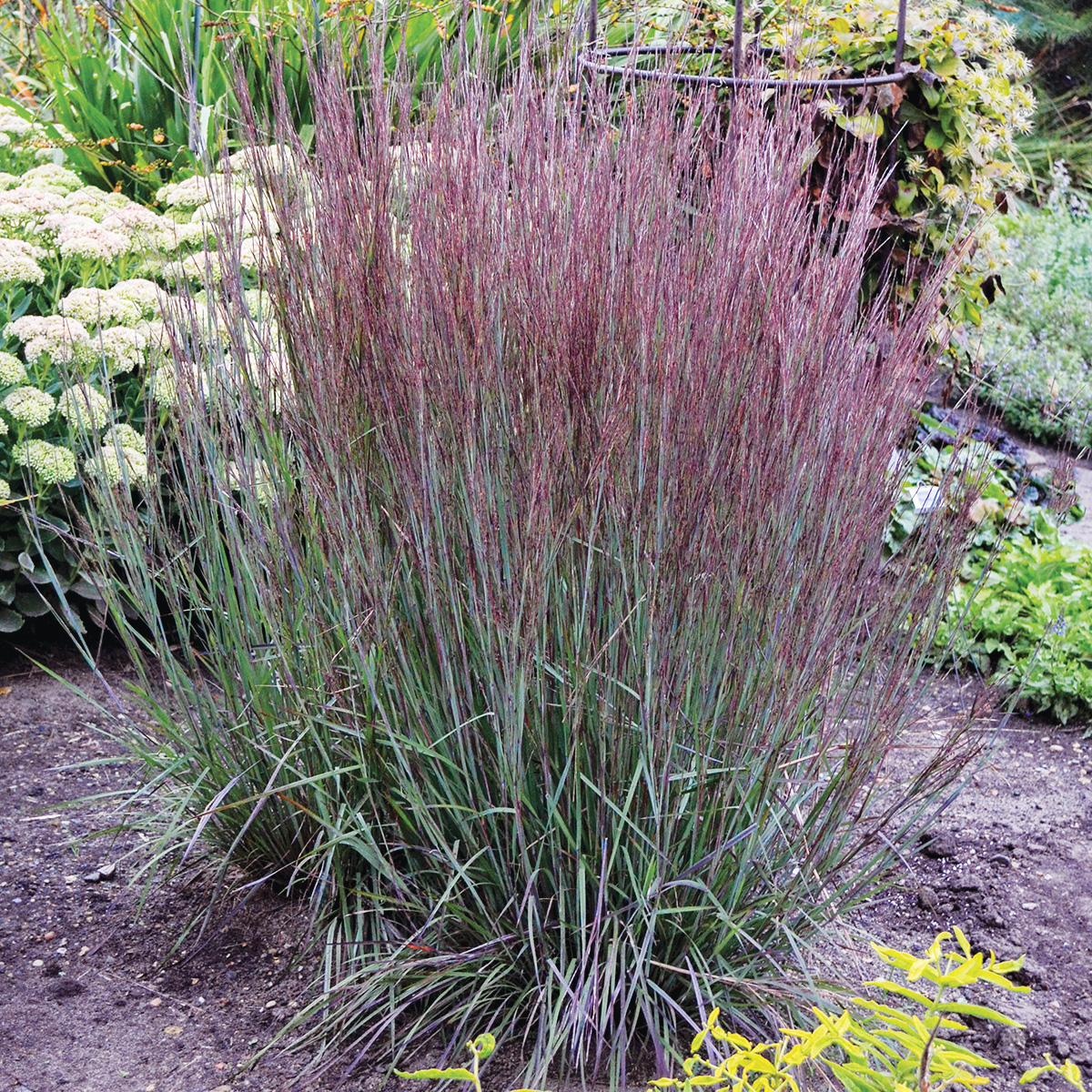
Name: Schizachyrium scoparium ‘Blue Paradise’
Zones: 3–9
Size: 3 to 3½ feet tall and 2 feet wide
Conditions: Full sun; adaptable to most well-drained soil types
Native range: Eastern North America
A very upright selection of little bluestem, ‘Blue Paradise’ offers plenty of rich texture and dramatic color. The foliage shines silvery-blue throughout the summer months and stands tall without flopping. Flower stems and seed heads emerge in early fall, taking on a wine-red cast that adds depth and drama to any planting. The nutritious seeds provide an excellent winter food source for songbirds. ‘Blue Paradise’ is also incredibly versatile in the landscape. Use it as a focal point in mixed borders and cottage gardens, or mass it in problem areas to control erosion. The plants are heat and drought tolerant once established and can handle a wide range of growing conditions.

Regional expert: Kim Toscano is a horticulturist, entomologist, garden designer, writer, and garden illustrator. She is also a Southwest regional reporter at FineGardening.com.
Mountain West
‘Kudos Mandarin’ agastache
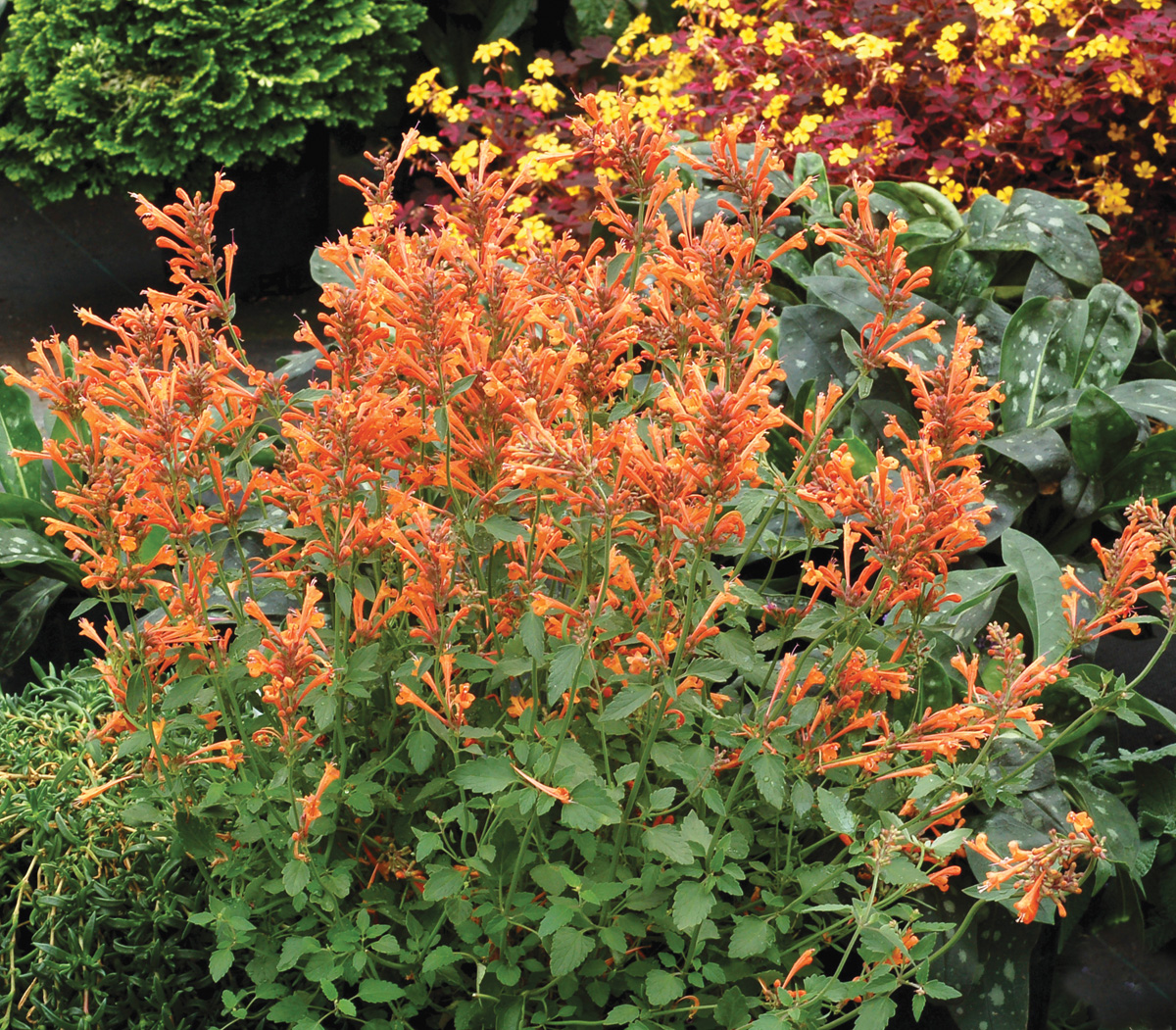
Name: Agastache ‘Kudos Mandarin’
Zones: 5–10
Size: 16 to 20 inches tall and 16 to 18 inches wide
Conditions: Full sun; well-drained soil
Native range: Hybrid
Agastaches beckon hummingbirds from dawn till dusk, giving these plants their common name, hummingbird mint. This is especially true for ‘Kudos Mandarin’. Drought and heat tolerant, deer resistant, and mildew resistant, this plant is a boon not just for hummingbirds but pollinators of many kinds for months on end. The fluffy, rich orange flowers pop out of magenta-purple calyces, adding a vibrant zing to the garden, with foliage that leans toward olive green and has a warm fennel and licorice scent. I like to pair it with a short ornamental grass like ‘Little Bunny’ fountain grass (Pennisetum alopecuroides ‘Little Bunny’, Zones 5–9). Requiring very well-drained soil, ‘Kudos Mandarin’ is also a nice size for a container.
‘Autumn Brilliance’ serviceberry
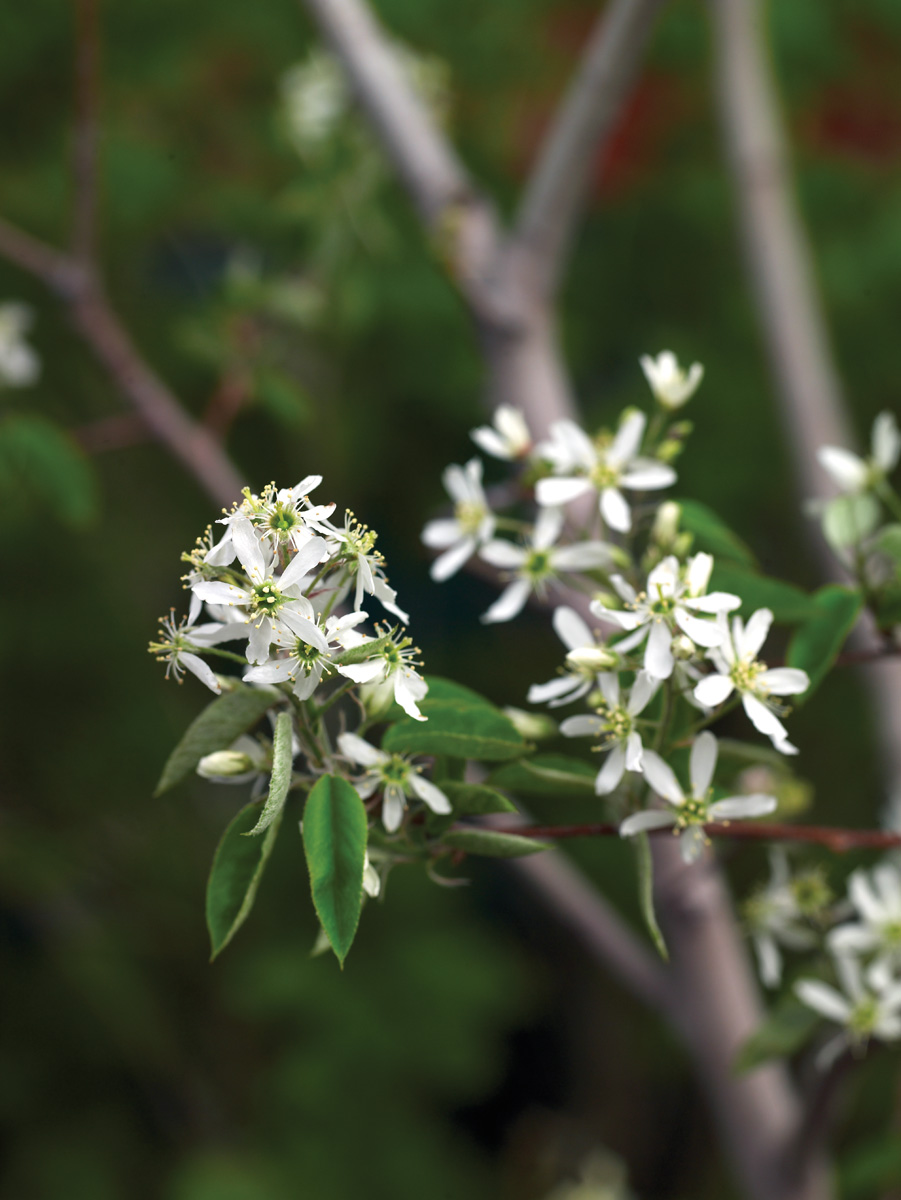
Name: Amelanchier × grandiflora ‘Autumn Brilliance’
Zones: 3–9
Size: 15 to 25 feet tall and wide
Conditions: Full sun to partial shade; well-drained soil
Native range: Hybrid of North American species
A smallish tree, ‘Autumn Brilliance’ serviceberry usually tops out at around 20 feet tall. Fragrant white flowers start attracting wildlife from the moment they bloom in May or June, depending on elevation. Bees love the blossoms, and birds flock to the berries that follow. This cultivar improves on its native parent species’ fruit production. The berries are edible for humans, but just go ahead and try to get enough for a pie—the birds will beat you to it. In autumn, the foliage leafs out in a party dress of hot pink, red, and orange leaves. Consider planting a single-trunk specimen if space is a consideration; if you’re looking to install a hedge or screen, a wider, multistem plant is a good option.
‘Matrona’ sedum
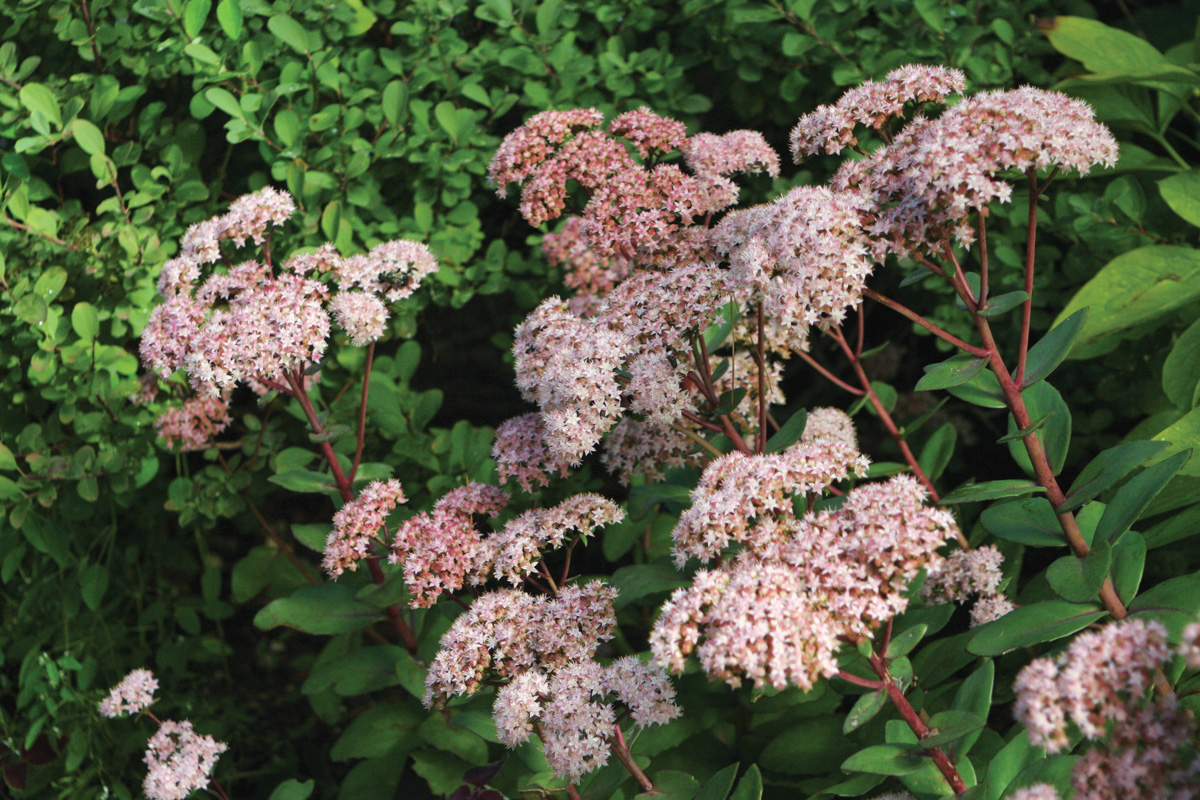
Name: Hylotelephium telephium ‘Matrona’
Zones: 3–9
Size: 2 to 2½ feet tall and 1½ to 2 feet wide
Conditions: Full sun; lean, well-drained soil
Native range: Eastern Europe, China, and Japan
This sedum is tough as nails and richer in color than the more common Autumn Joy (H. telephium ‘Herbstfreude’, Zones 3–9). ‘Matrona’ has thick gray-green leaves and dark stems, topped off with clusters of pale pink flowers that resemble broccoli heads. I like to plant it in groupings of odd numbers and add more than one such grouping if I have the space. ‘Matrona’ sedum pairs well with blue grama grass (Bouteloua gracilis, Zones 3–10) and salvias (Salvia spp. and cvs., Zones 3–10). While this sedum is drought tolerant once established, be sure to provide ample supplemental water every week or so during scorching periods in the first year you plant it.
Fernbush
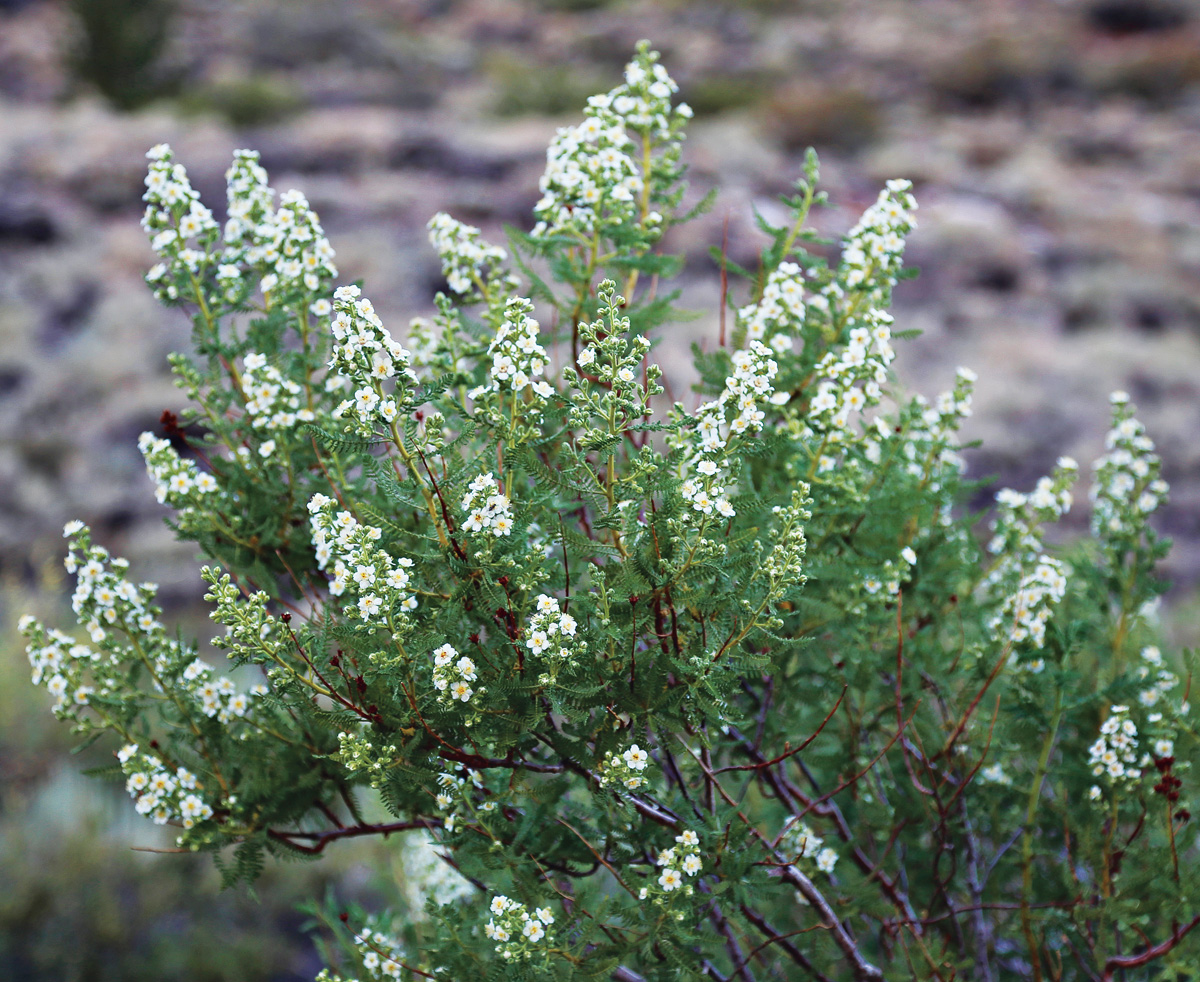
Name: Chamaebatiaria millefolium
Zones: 4–9
Size: 5 to 8 feet tall and wide
Conditions: Full sun; well-drained soil
Native range: Western United States
Fernbush, or desert sweet, is a brilliant plant for Mountain West gardens. This beautiful mounded shrub begins blooming as early as June with loads of small white flowers that have five petals and double rings of yellow stamens. They draw native bees and butterflies in abundance. Below, the bark is a rich cinnamon color. When touched, the finely cut fern-like leaves give off a pleasant aroma. In warmer regions, this shrub will hold its leaves in winter. Fernbush is very drought tolerant but will perform better and bloom longer with an occasional deep watering. It needs little to no pruning, but can take some gentle shaping.

Regional expert: Mary Ann Newcomer is a lifelong gardener based in Boise, Idaho, and the author of Rocky Mountain Gardener’s Handbook.
Midwest
Prelude™ Blue short-stalked catmint
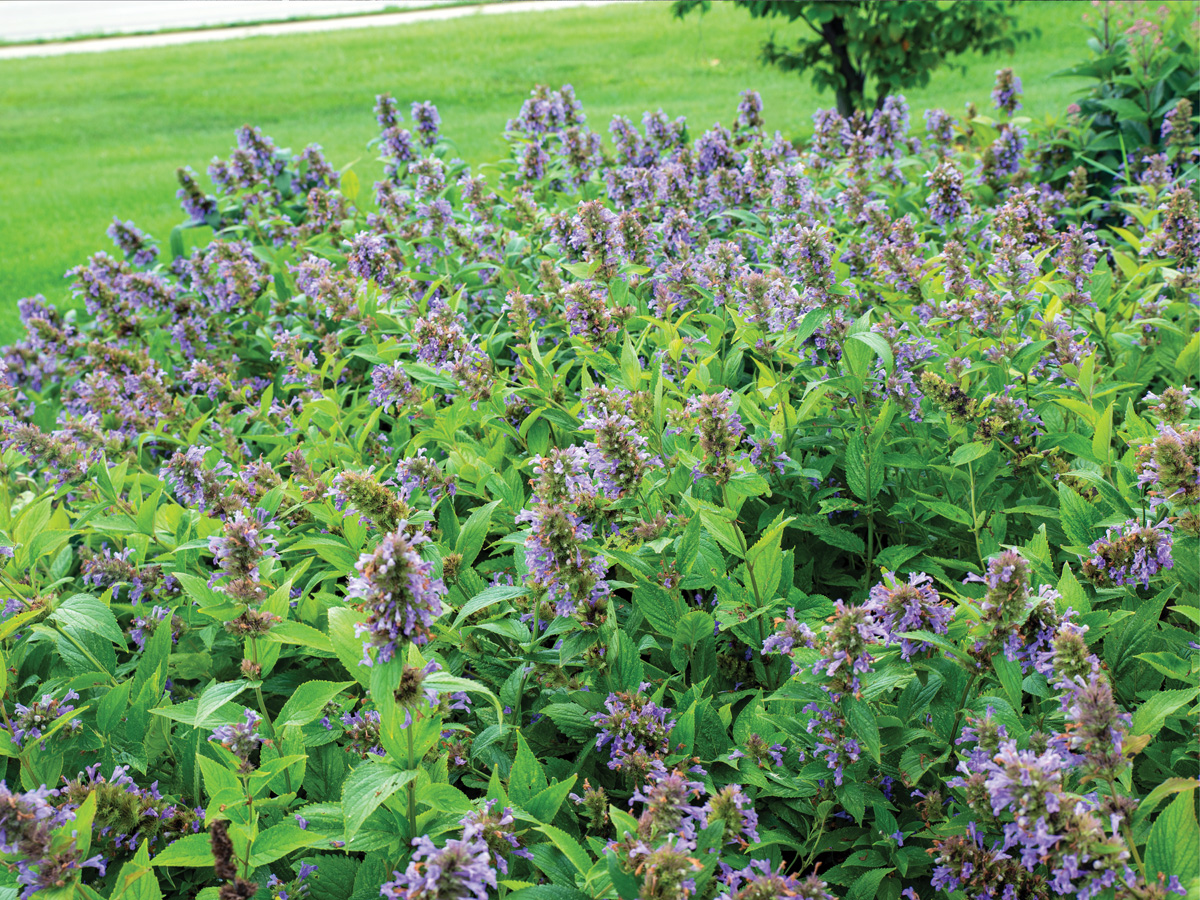
Name: Nepeta subsessilis ‘Balneplud’
Zones: 4–9
Size: 28 to 36 inches tall and 24 to 30 inches wide
Conditions: Full sun to partial shade; well-drained soil
Native range: Japan
I’ve long been a fan of Nepeta, a genus that offers an abundance of color with little fuss and is of no interest to most deer and rabbits. But I was ready for something a bit different than the common catmint (Nepeta × faassenii, Zones 3–8) that we all know and love. Enter short-stalked catmint, with larger semi-tubular flowers that bloom along stiff stems. Prelude™ Blue is close to a true blue and produces long-lasting blossoms from late spring to fall on sizable plants that rarely flop. A cutback after flowering encourages new blooms. While some growers may list this plant as only taking full sun, it can handle some light shade. Like other catmints, it may be attractive to cats.
‘Polished Brass’ boneset
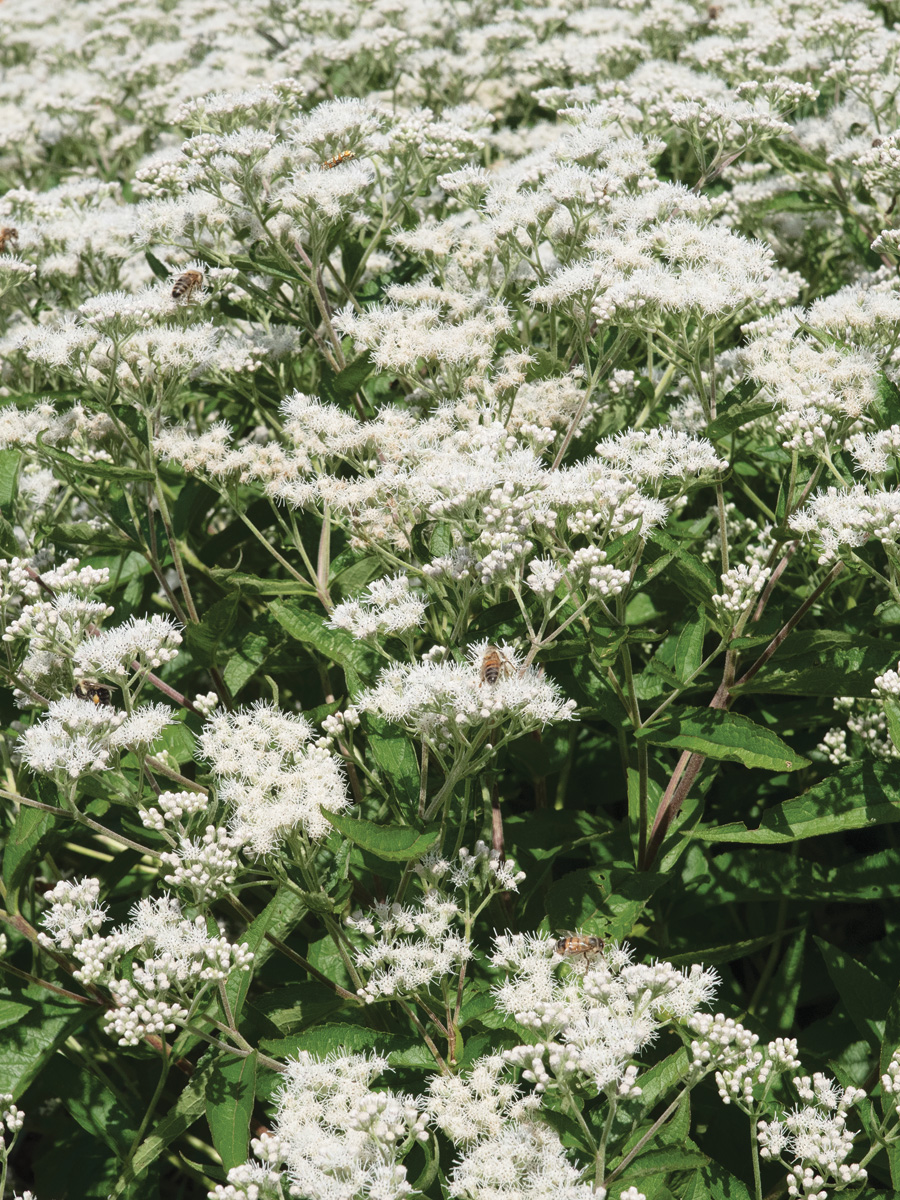
Name: Eupatorium ‘Polished Brass’
Zones: 3–8
Size: 4 feet tall and wide
Conditions: Full sun to partial shade; average to moist soil
Native range: Hybrid of North American species
If I were to give an award for the plant that attracts the most monarch butterflies in my garden, this boneset would win by a landslide. For a few days in late summer when monarchs are migrating, I watch clouds of them bounce around between the flowers of this plant. This deer- and rabbit-resistant perennial is a hybrid of ‘Milk and Cookies’ American boneset (E. perfoliatum ‘Milk and Cookies’, Zones 3–8) and late boneset (E. serotinum, Zones 3–10). It rockets up to 4 feet tall with glossy brownish-red leaves followed by white flowers. ‘Polished Brass’ asks for little other than a cutback of spent stems in fall or spring, which means there’s plenty of time to enjoy the monarch show.
‘Little Red Fox’ little bluestem
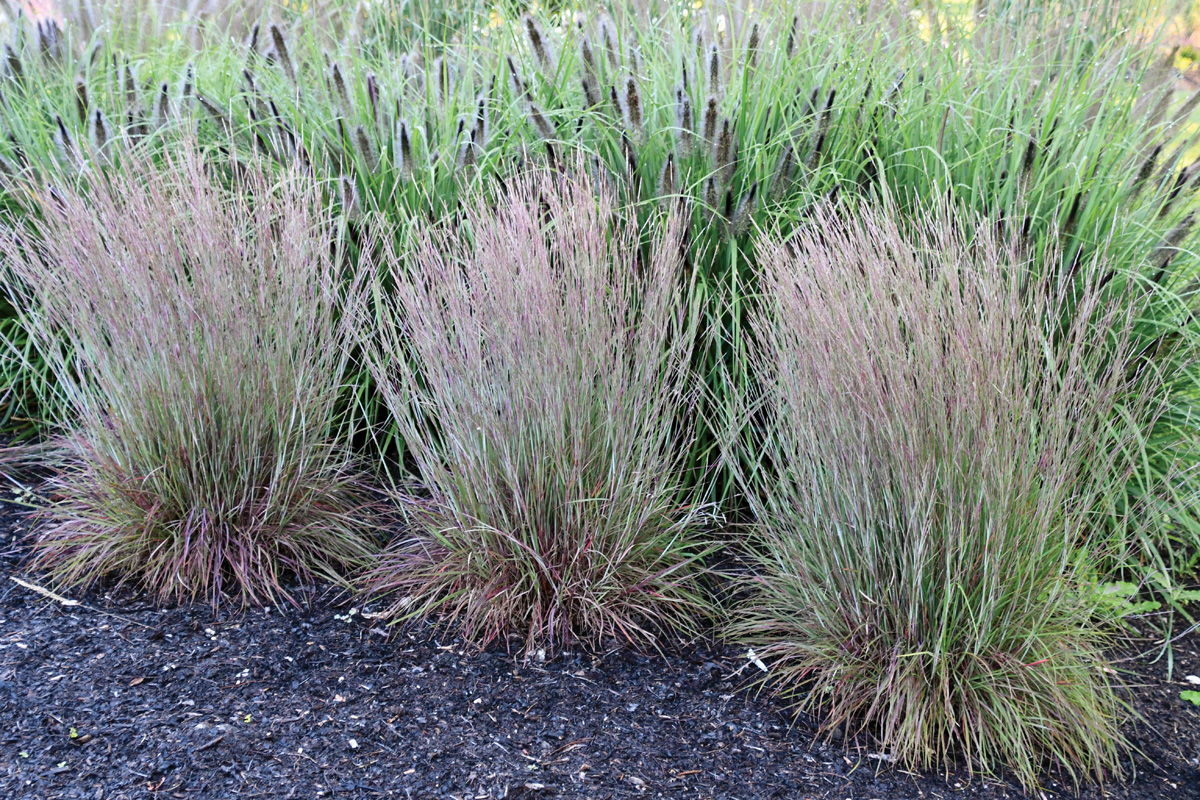
Name: Schizachyrium scoparium ‘Little Red Fox’
Zones: 4–10
Size: 2 feet tall and 1 to 1½ feet wide
Conditions: Full sun; well-drained soil
Native range: Central and eastern North America
Little bluestem is having a moment right now, with several taller and blue-foliaged varieties being introduced recently, but ‘Little Red Fox’ departs from the crowd in both stature and color. Coming in at only around 2 feet tall with a vase-shaped habit, this perennial is more appropriate for areas closer to the front of the border or even for use in container plantings. It emerges in spring with grayish-green foliage that deepens to red by midsummer. Purple and silver tones then emerge as the season advances. ‘Little Red Fox’ is at its best grouped in drifts, where its stiff stems will continue to add interest throughout winter.
‘Orange Field’ mountain fleece
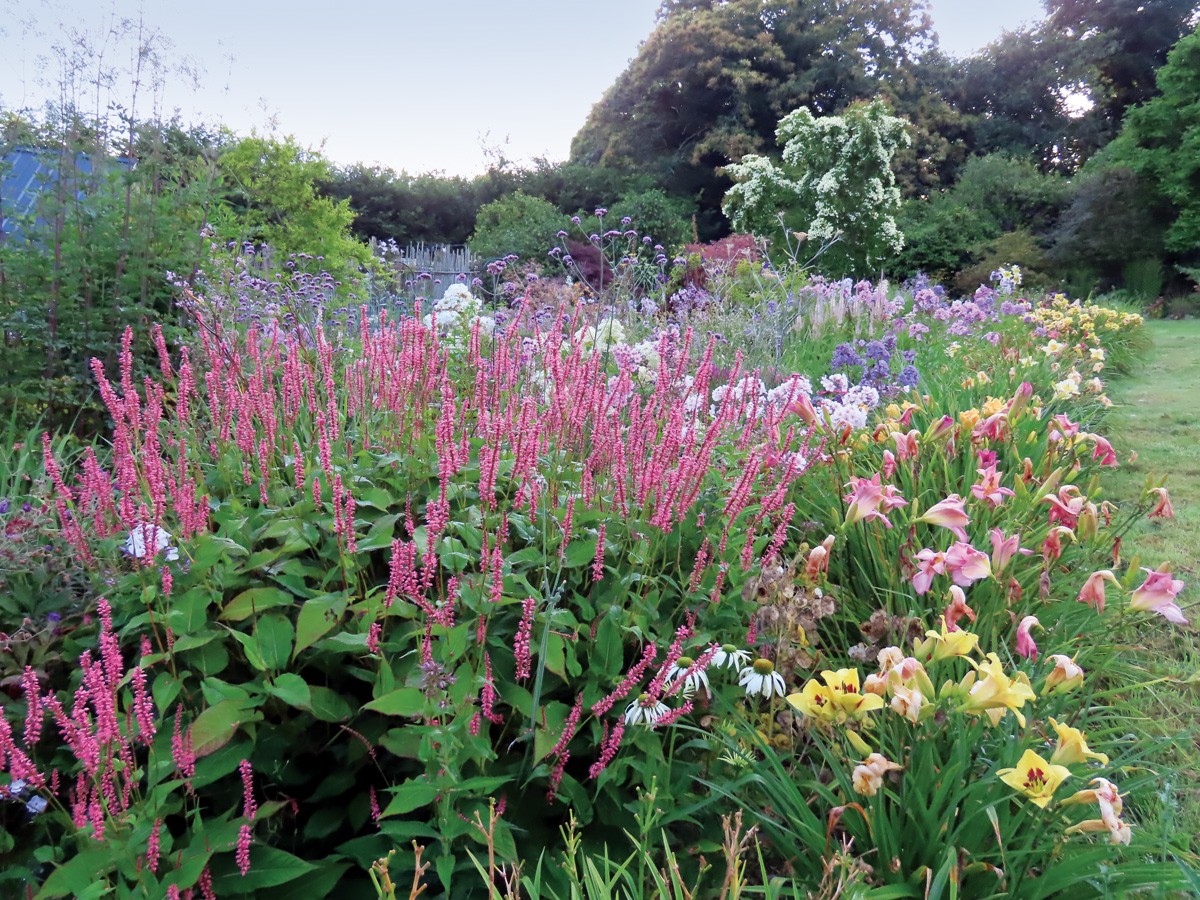
Name: Bistorta amplexicaulis ‘Orange Field’ (syn. Persicaria amplexicaulis ‘Orange Field’)
Zones: 4–9
Size: 3 feet tall and wide
Conditions: Full sun to partial shade; moist to wet soil
Native range: The Himalayas
Few plants are at home in both tightly managed flower borders and naturalistic cottage gardens, but this well-behaved perennial works in multiple situations. ‘Orange Field’ mountain fleece quickly bulks up to a nice-sized clump that produces an abundance of 5-inch-long coral-pink flowers, which wave above pointed green foliage. In addition to their color and interesting shape, the blooms are valuable as cut flowers and make an excellent addition to bouquets, where they have a long vase life. Although it prefers moist or even wet soil, ‘Orange Field’ adapts well to other conditions. While it usually goes untouched by deer, the foliage can suffer some damage from Japanese beetles.

Regional expert: Erin L. Schanen is a lifelong gardener who chronicles her journey through The Impatient Gardener blog and YouTube channel. She lives and gardens in southeastern Wisconsin.
Southeast
Paraplu Pink Ink® Rose of Sharon

Name: Hibiscus ‘Minsywhi07’
Zones: 5–9
Size: 5 to 8 feet tall and 4 to 5 feet wide
Conditions: Full sun to partial shade; average to dry, well-drained soil
Native range: Hybrid of species native to Asia
Rose of Sharon has stood the test of time for its dependable blooms and ability to thrive with virtually no care. First introduced to the United States in the late 1500s, it fell out of favor for some time but is currently enjoying a resurgence of popularity due to exciting new cultivars like Paraplu Pink Ink®. The beautiful 3- to 5-inch flowers feature red-pink markings radiating from the center on white petals. Its bloom period begins in early June and, under average garden conditions, will continue nonstop well into September. Pollinators are attracted to the flowers’ nectar, and the large petals provide easy landing spots. Seldom bothered by deer, it is very drought-tolerant once established. Watch out for unwanted reseeding.
‘Vintage Gold’ false cypress
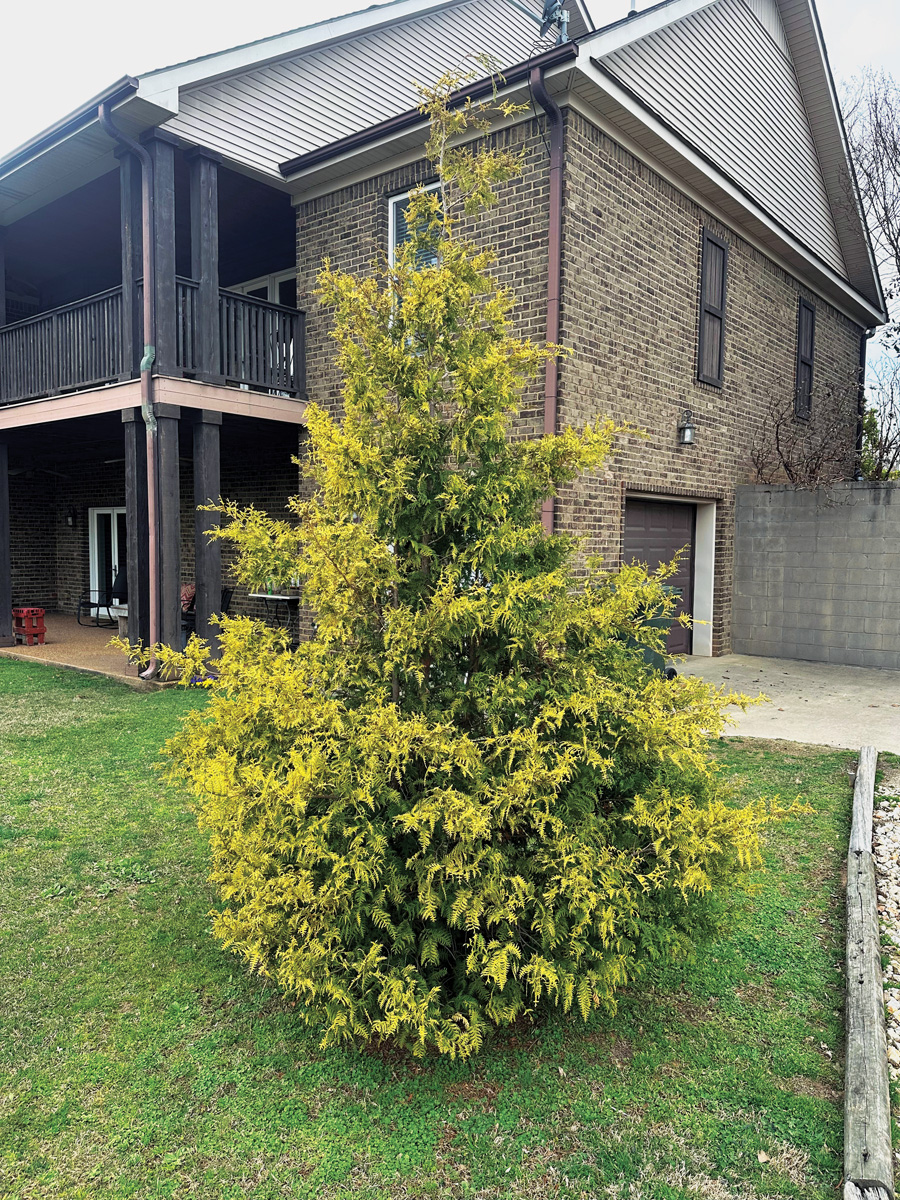
Name: Chamaecyparis pisifera ‘Vintage Gold’
Zones: 4–8
Size: 10 to 20 feet tall and 5 to 8 feet wide
Conditions: Full sun to partial shade; average soil
Native range: Japan
‘Vintage Gold’ has long been a favorite conifer of mine for its vivid gold year-round color. It makes a handsome pyramid with soft, graceful, lacy branches that are excellent as cut greenery. It does not burn in the heat of summer and only darkens slightly during the coldest parts of winter. It makes an attractive specimen, perfect for anchoring the corner of a home, and is an effective component in a mixed privacy screen. It is drought-tolerant once established and not favored by deer. Occasional pruning will encourage a fuller, denser plant. Be aware that ‘Vintage Gold’ gets much bigger than its plant tag or literature might indicate. In my experience, it can grow up to 10 feet tall in its first 5 to 7 years.
‘Ham and Eggs’ lantana
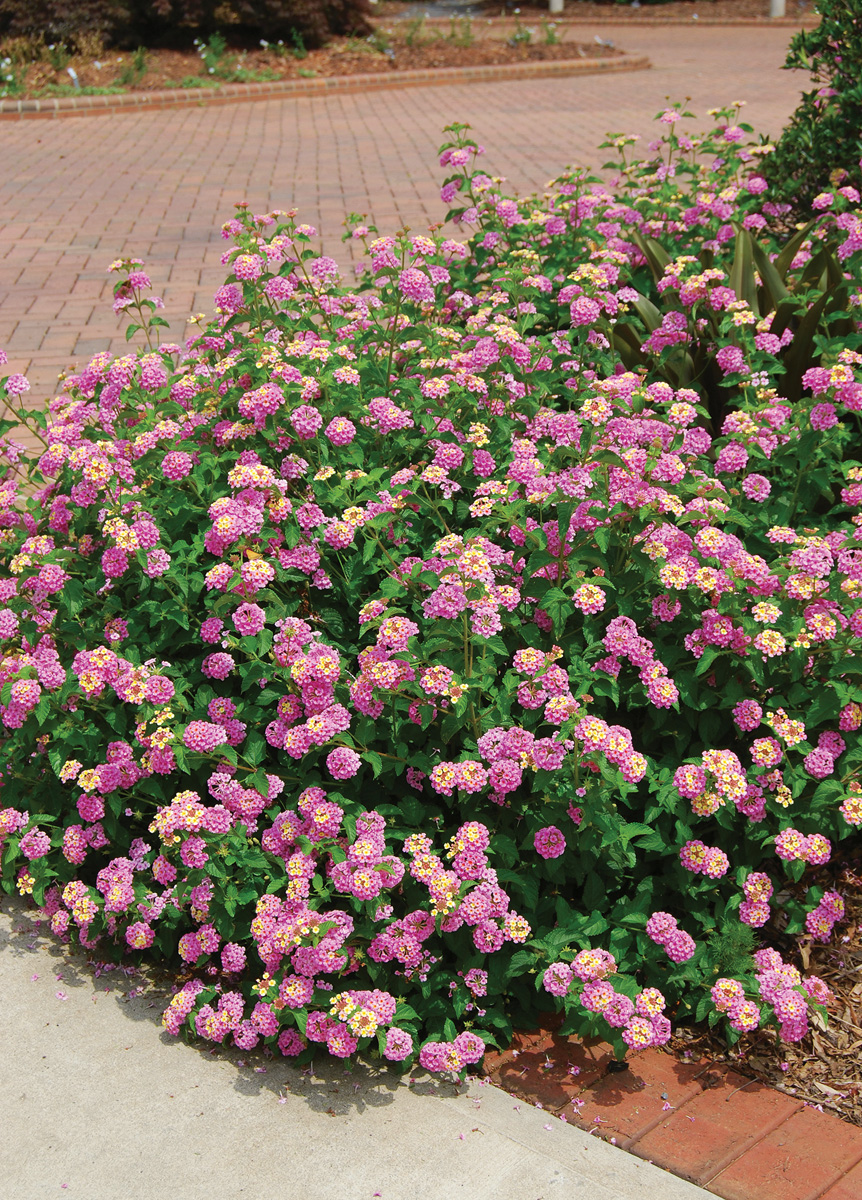
Name: Lantana camara ‘Ham and Eggs’
Zones: 7–11
Size: 2 to 3 feet tall and 3 to 4 feet wide
Conditions: Full sun; well-drained soil
Native range: Central and South America
Over the years, I have only found two lantana cultivars to be reliably hardy in my Zone 7 home garden and at the University of Tennessee Gardens in Jackson: ‘Miss Huff’ and ‘Ham and Eggs’. Of the two, ‘Ham and Eggs’ is my favorite for its flower color and slightly smaller size. The pink-and-yellow blooms begin in late spring and continue right up until our first frost. Because the sterile flowers do not set seed, the plants can put more of their energy into producing abundant, readily available nectar that attracts bees, butterflies, and hummingbirds. After frost, stems can be cut back close to the ground, and as long as the plants are properly sited in full sun and well-drained soil, new shoots will emerge in late spring once the ground warms.
Teddy Bear® Southern magnolia
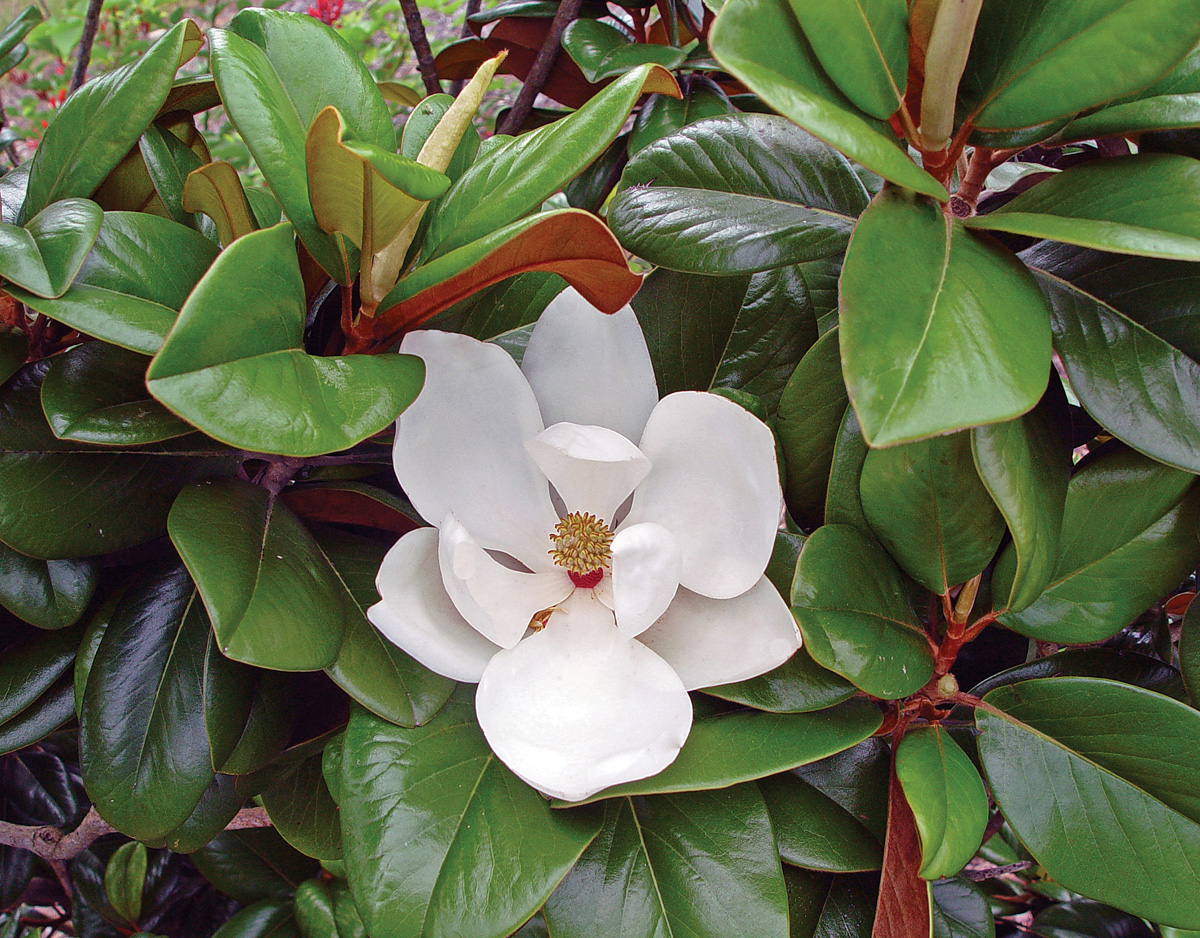
Name: Magnolia grandiflora ‘Southern Charm’
Zones: 7–9
Size: 15 to 30 feet tall and 8 to 15 feet wide
Conditions: Full sun to partial shade; average to wet soil
Native range: Southern United States
Teddy Bear® is one of my favorite cultivars of our native Southern magnolia. The shiny, dark green, medium-sized leaves are coated on the back side with rich reddish-brown indumentum (plant hairs) that look and feel as soft as a well-loved teddy bear. The tree is densely branched and compact in habit, adding classic Southern charm to any landscape, no matter the size. After only three to four years, the tree will begin producing 6- to 8-inch-wide fragrant white flowers in late spring to early summer. Once established, it is drought-tolerant, low-maintenance, and an excellent source for cut greenery.

Regional expert: Jason Reeves is a contributing editor and the curator of the University of Tennessee Gardens in Jackson. Follow him on Facebook at “Jason Reeves – in the garden.”
Mid-Atlantic
American ipecac
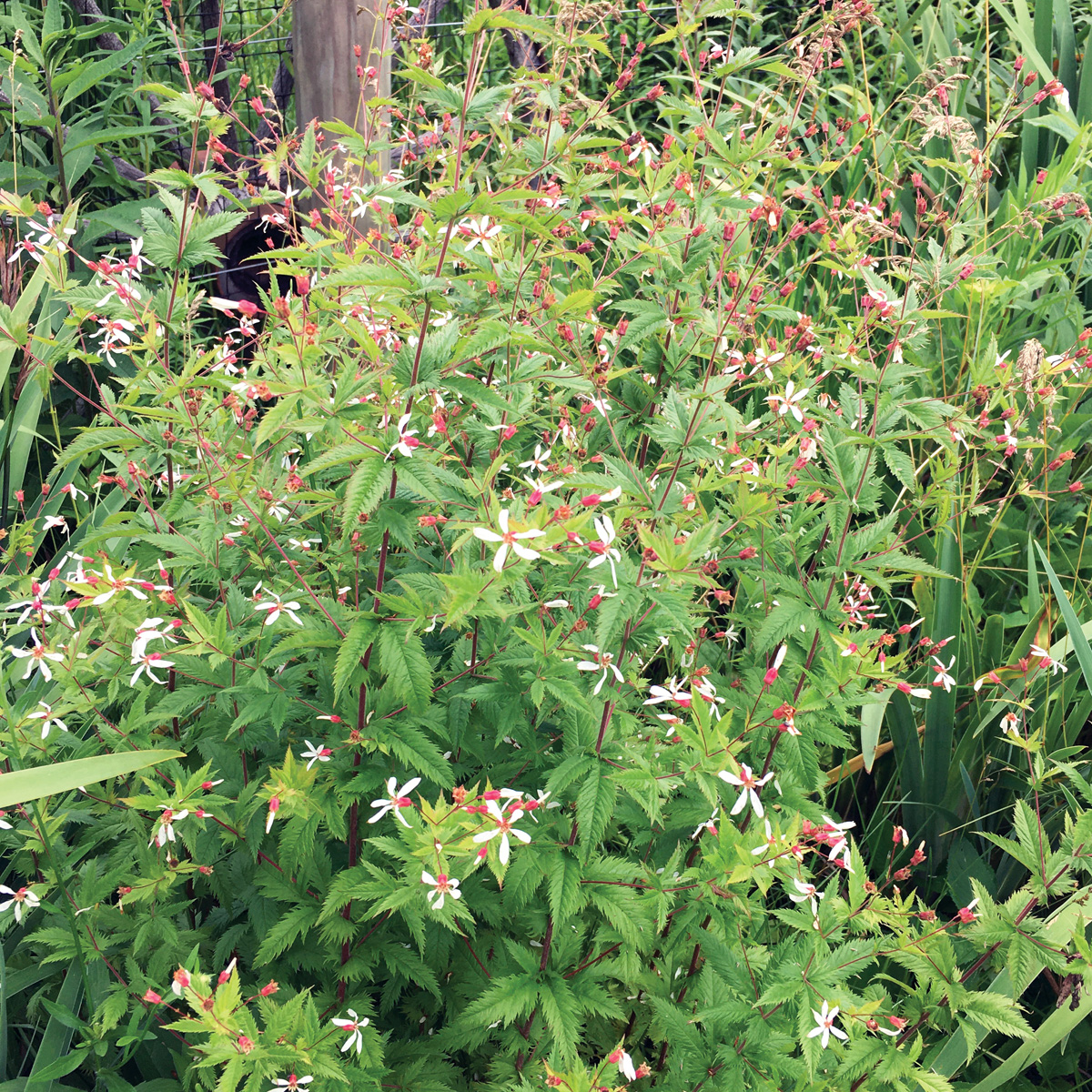
Name: Gillenia stipulata
Zones: 4–8
Size: 2 to 3 feet tall and 1 to 3 feet wide
Conditions: Full sun to partial shade; average, well-drained soil
Native range: Eastern United States
Easy-care, elegant American ipecac sparkles with an abundance of dainty white blossoms and red-blushed calyces in early summer. Once the flowers finish, the clumps of slender reddish stems and lacy bright green leaves make a lovely, fine-textured bed filler through summer. It shines again in fall when the foliage turns, usually to a rich shade of red, but oranges and yellows are also possible. Native to parts of eastern North America, this perennial grows wild in woodlands but can also adapt to sun, as long as the soil isn’t too dry. American ipecac is excellent for softening the edge of a path, planting around shrubs, and pairing with bold-leaved perennials, such as hostas (Hosta spp. and cvs., Zones 3–8).
Swamp milkweed
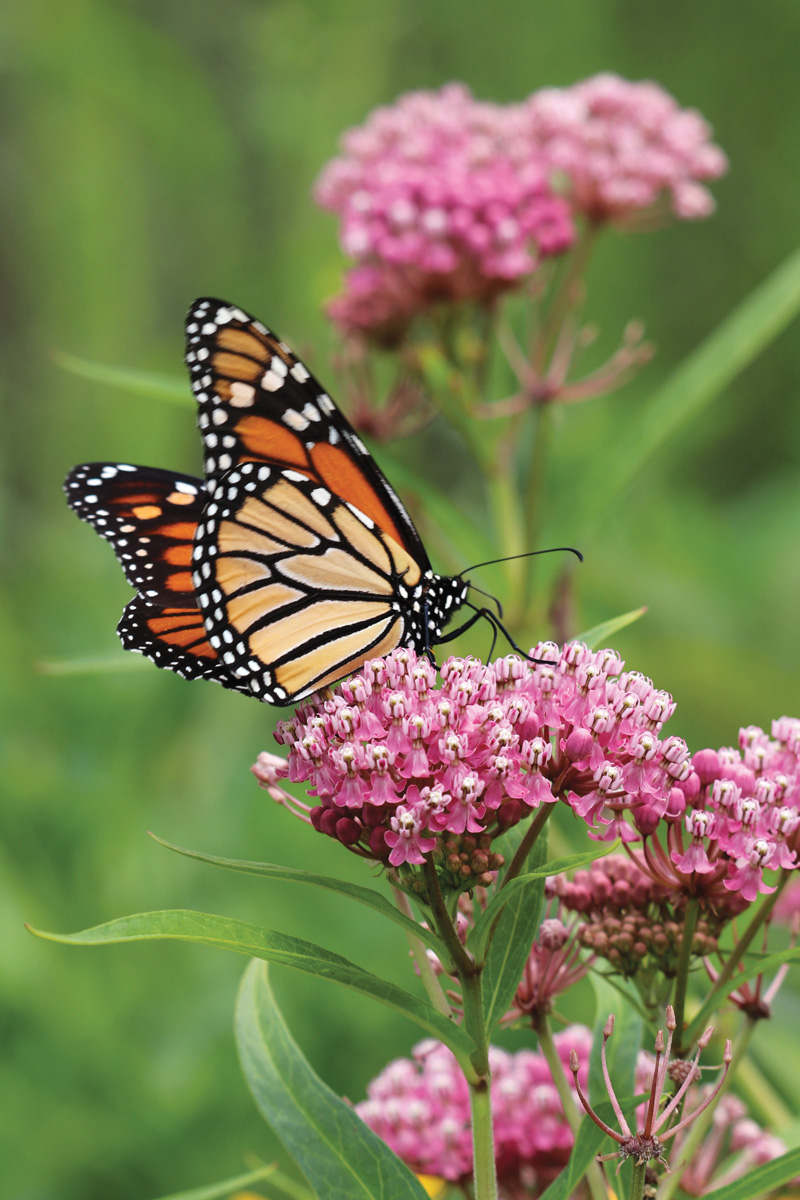
Name: Asclepias incarnata
Zones: 3–9
Size: 3 to 4 feet tall and 2 to 3 feet wide
Conditions: Full sun; average to moist soil
Native range: United States and eastern Canada
Swamp milkweed is an unfortunate name for this beautiful and dependable perennial. It thrives in moist—even wet—soil but can adapt just fine to gardens that aren’t distinctly dry, and it certainly isn’t weedy. In mid to late summer, its well-behaved clumps of sturdy, upright stems and slender leaves are topped with dense clusters of fragrant flowers, typically in shades of pink. Swamp milkweed makes a perfect partner for other sun-loving perennials and grasses that peak around the same time, such as Culver’s root (Veronicastrum virginicum, Zones 3–8) and prairie dropseed (Sporobolus heterolepis, Zones 3–9). This native plant is a boon for insects—the foliage feeds monarch butterfly larvae, and the blooms supply a bounty of nectar for many butterflies and bees.
Summersweet
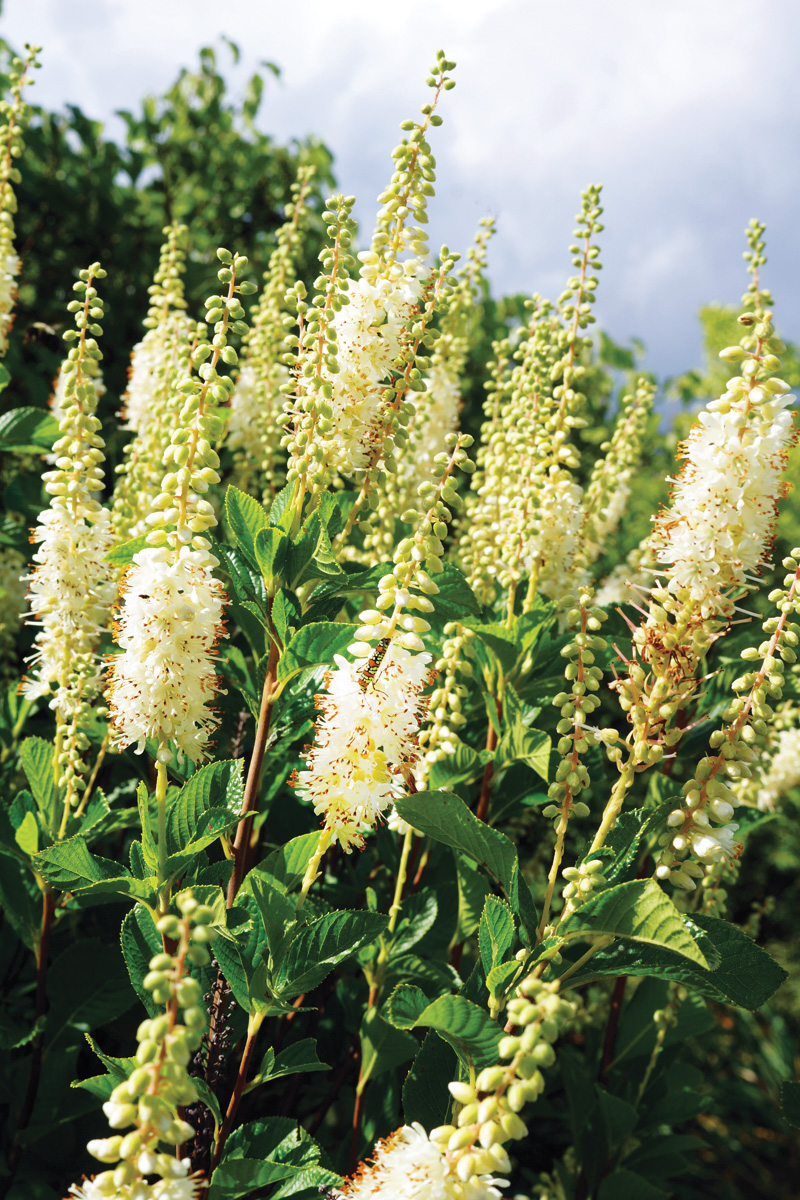
Name: Clethra alnifolia
Zones: 3–9
Size: 3 to 8 feet tall and 4 to 6 feet wide
Conditions: Full sun to partial shade; average to moist soil
Native range: Coastal eastern North America
Free-flowering and fragrant, summersweet is a delight in the late summer garden. Its slender, brushlike spikes of white flowers draw the eye, as well as bees and butterflies. The show continues into fall, when the foliage turns yellow and interesting seed heads stick around for winter interest. This trouble-free deciduous shrub can adapt to sun or shade; the more sun it gets, the more moisture it needs. Enjoy it as an informal hedge or screening plant by itself or combined with other multiseason shrubs like viburnums (Viburnum spp. and cvs., Zones 2–9). Summersweet can spread via suckers, but they are easy to take out if desired. I have never had to prune my plant for it to perform well, but if needed, summersweet can be cut back in spring, as it flowers on new growth.
Frostweed
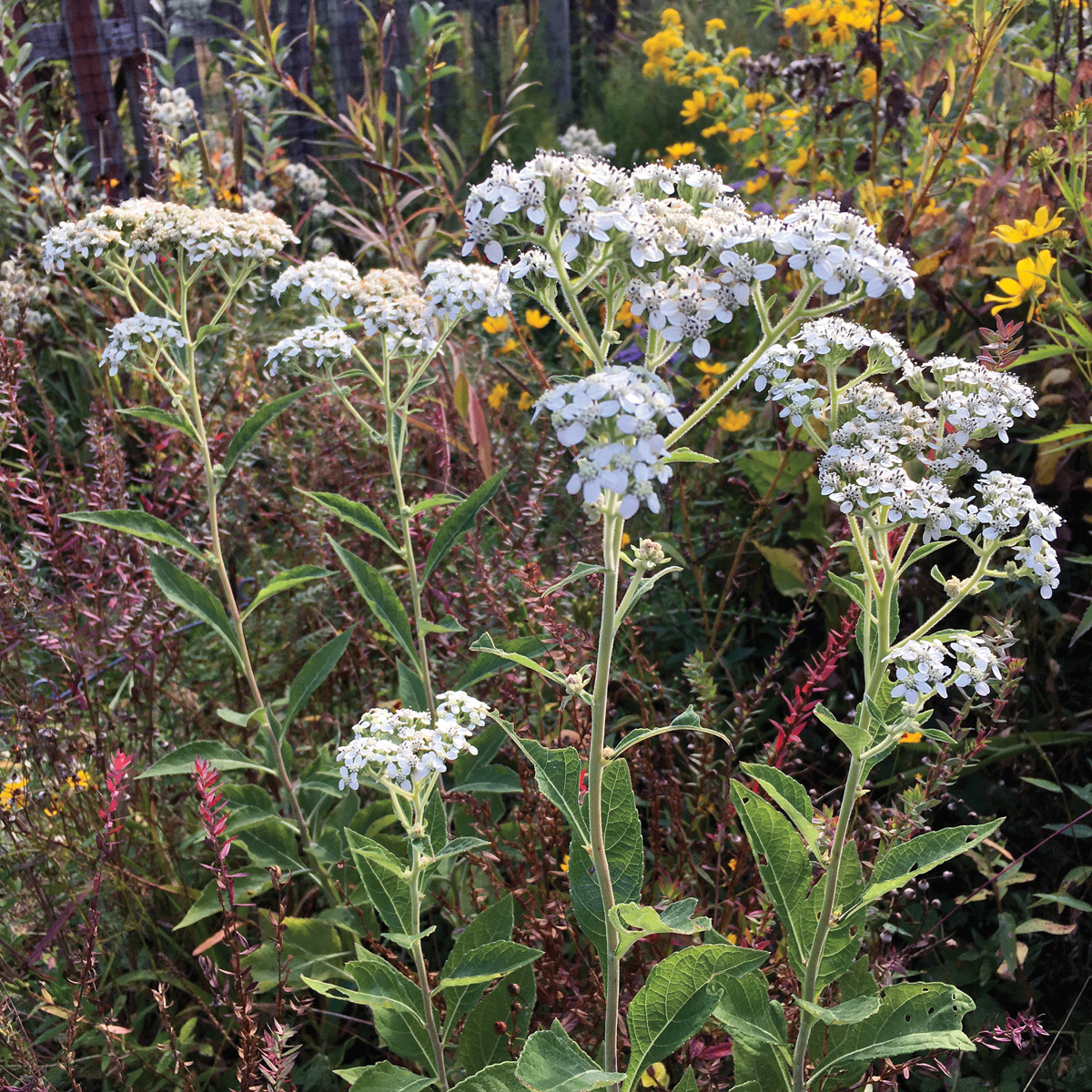
Name: Verbesina virginica
Zones: 5–9
Size: 3 to 6 feet tall and 2 to 3 feet wide
Conditions: Full sun to partial shade; average, well-drained soil
Native range: Southeastern United States
If you want to bring the beauty of so-called frost flowers to your garden, frostweed is one of your best bets. This fabulous phenomenon appears when freezing temperatures provide the right conditions for curling ribbons of ice to emerge from the base of the stems. However, you don’t have to wait until frosty weather arrives to enjoy this easy-care, eastern-native perennial. Its bold foliage and clustered white blooms provide a good show and a welcome source of food for a wide variety of beneficial insects from late summer well into fall. Clip off the seed heads in autumn to prevent self-sowing if you wish, but don’t cut the main stems to the ground until spring. Frostweed tolerates a good bit of shade and can take dry soil once established.

Regional expert: Nancy J. Ondra sells uncommon seeds at hayefield.com. She gardens in Bucks County, Pennsylvania, and is the author of more than 15 books, including The Perennial Gardener’s Design Primer.
Northeast
‘Superba’ Himalayan fleece flower
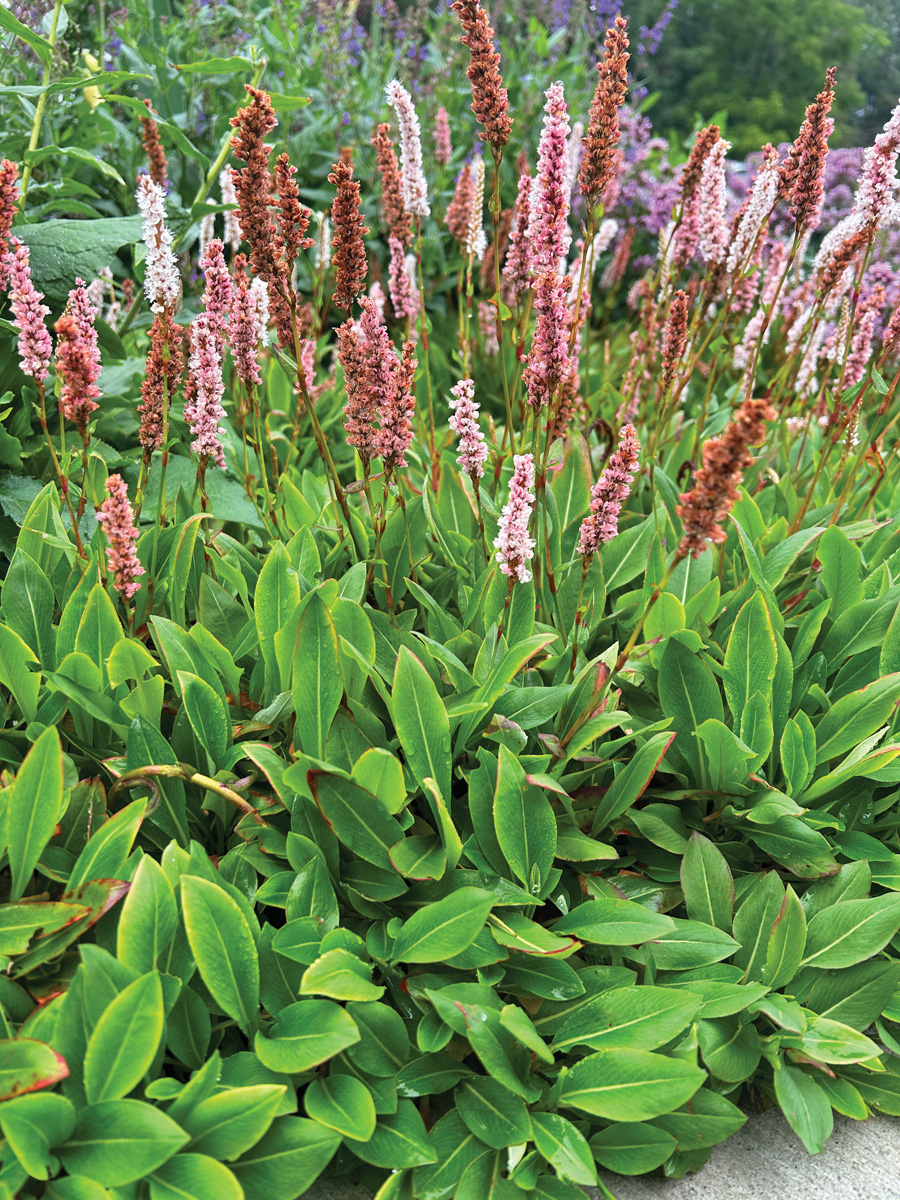
Name: Bistorta affinis ‘Superba’ (syn. Persicaria affinis ‘Superba’)
Zones: 4–9
Size: 8 to 12 inches tall and 12 to 24 inches wide
Conditions: Full sun to partial shade; average to moist, well-drained soil
Native range: The Himalayas
This lovely little perennial is one tough customer. Mother Nature has thrown just about everything at my patch of ‘Superba’ Himalayan fleece flower over the years, including scorching sun, drought, subzero temperatures with no snow cover, and periodic inundation, and it has sailed through with nary a complaint. I first planted this perennial in the 1990s as a ground cover in friable soil with no regular irrigation. Within a couple of years, it had filled in, and the original plants remain some 30 years later. In midsummer, wiry stems terminate in pale pink flowers. As the blooms fade, the calyces deepen to a striking red, giving a lovely multicolored effect. In fall, the leaves take on coppery-red hues and remain deep into winter.
Stinking hellebore
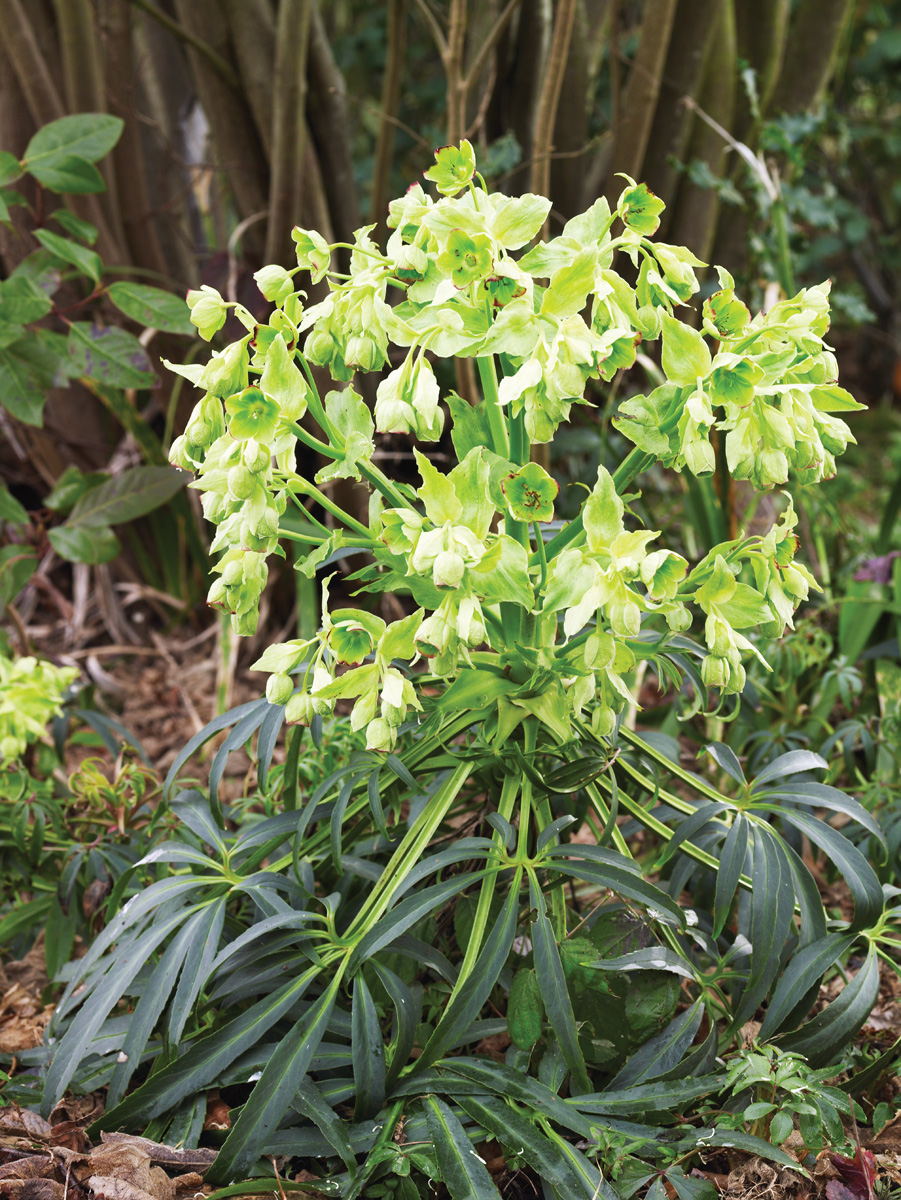
Name: Helleborus foetidus
Zones: 5–9
Size: 1 to 2½ feet tall and 1 to 2 feet wide
Conditions: Partial to full shade; rich, well-drained soil
Native range: Europe, Turkey, and Morocco
In the depths of winter, when snow cover wanes, this evergreen perennial provides visual relief for those eagerly awaiting the arrival of spring. Nodding flowering stems rise above snowdrifts, dancing atop deep-green leathery leaves. This foliage, with its sharply pointed lobes, is so dark that it appears almost black against the snow, giving rise to a fun common name: bearsfoot. The leaves are also unpleasantly pungent when crushed, giving it a natural resistance to predation by deer and rabbits. Stinking hellebore’s blooms look like pale lanterns, each subtended by soft green bracts. Supply this stalwart with organic soil that has a neutral pH, and it will quickly form a tidy clump and self-sow happily. A true workhorse, it thrives in even less than ideal conditions.
‘Pocahontas’ penstemon
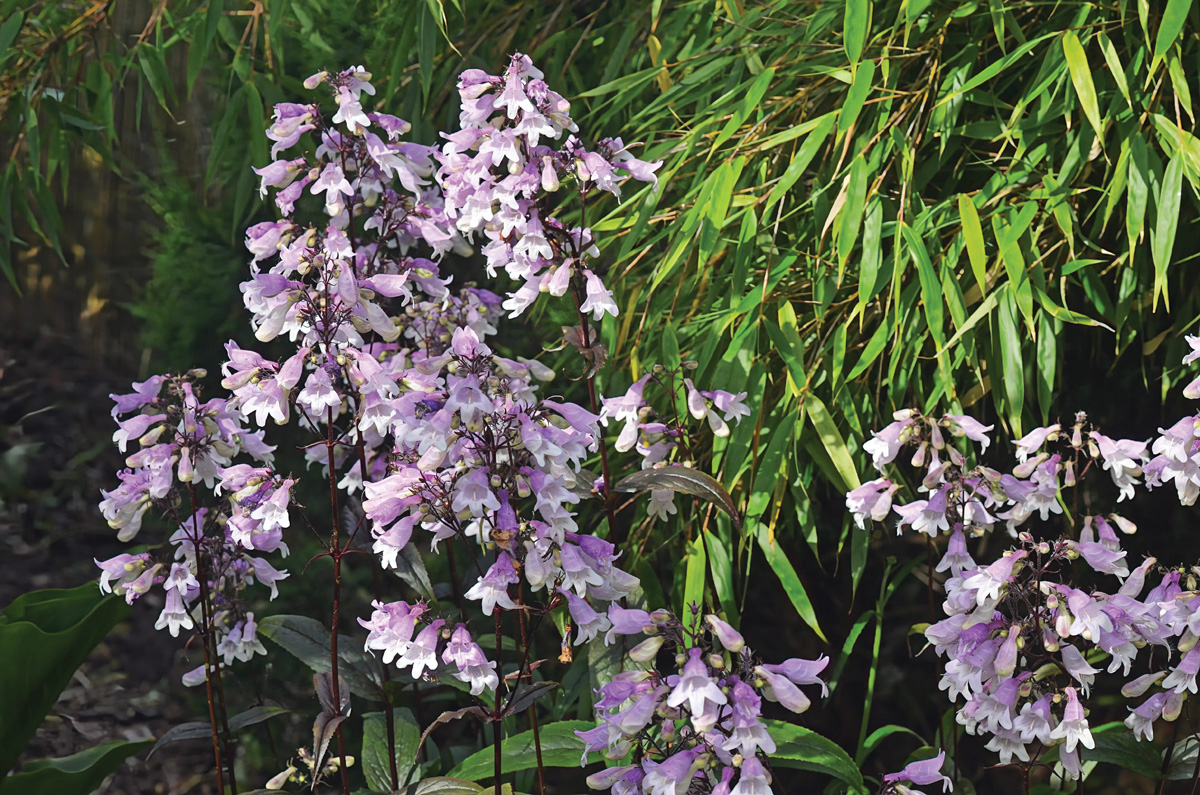
Name: Penstemon digitalis ‘Pocahontas’
Zones: 4–9
Size: 3 to 4 feet tall and 2 to 3 feet wide
Conditions: Full sun to partial shade; average to dry, well-drained soil
Native range: Eastern North America
With deep-purple leaves that emerge in spring and coppery seedpods that poke through the snow in winter, ‘Pocahontas’ penstemon provides an attractive presence year-round. While the straight species’ clean white flowers look lovely on roadsides and fields in springtime, this cultivar boasts lavender-pink flowers, which are beautifully offset by the rich purple foliage beneath. Blooming is most prolific when the plant is grown in full sun with adequate moisture. In these conditions, ‘Pocahontas’ penstemon will reach at least 4 feet tall. This plant exhibits remarkable resilience to both drought and occasional heavy periods of rain. It’s also resistant to deer and rabbit damage, useful as a cut flower, and attractive to bees, hummingbirds, and butterflies.
Silvery creeping willow
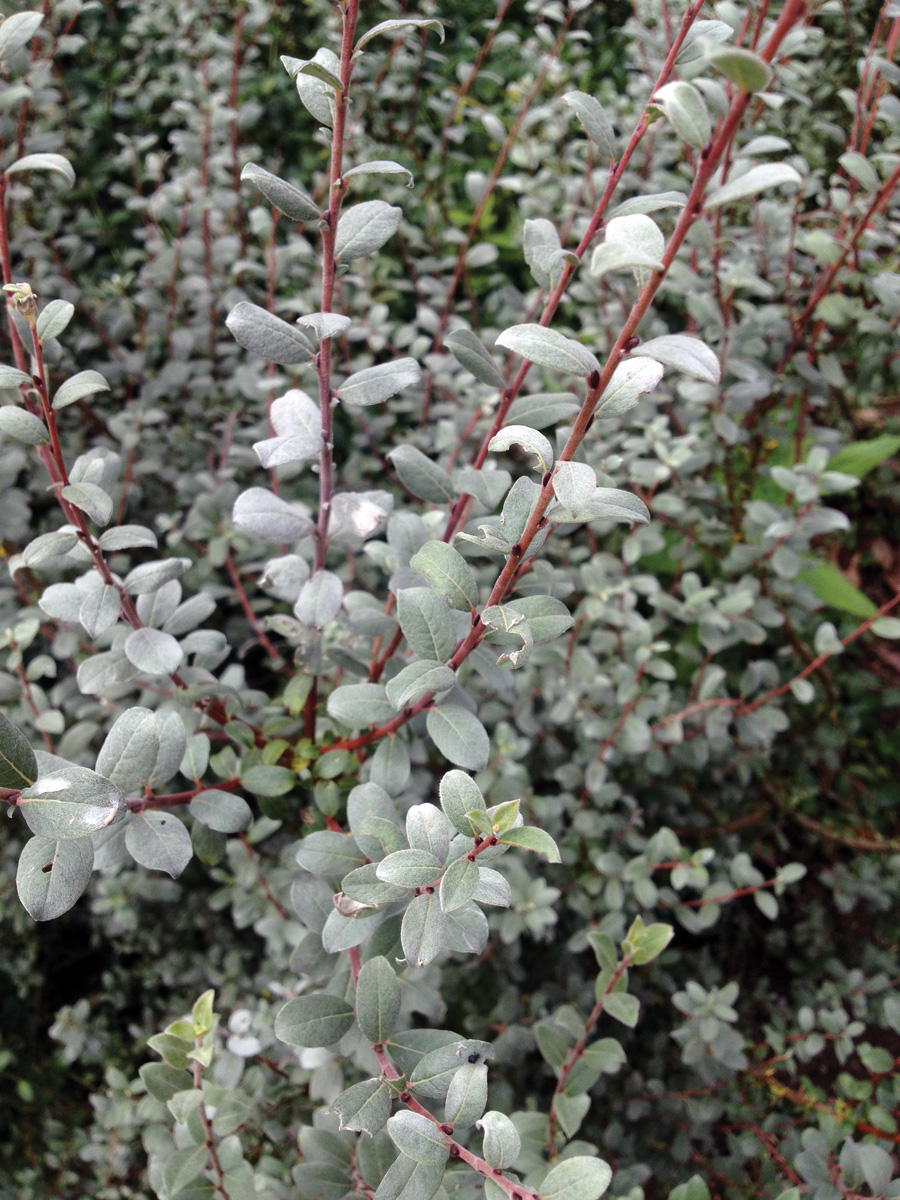
Name: Salix repens var. argentea
Zones: 3–6
Size: 1½ to 3 feet tall and 3 to 6 feet wide
Conditions: Full sun to partial shade; medium to moist, well-drained soil
Native range: Europe and western and central Asia
What do I admire most about this shrubby willow? Is it the lovely diminutive leaves that move with the summer breeze? Is it the way the foliage color combines so beautifully with surrounding plants, cooling hot colors and complementing softer hues? Or is it the slender rosy stems that look so vivid against winter snow? Yes, yes, and yes! Growing a mere 3 feet tall, this hardworking multistemmed shrub can be used as a ground cover, an edging plant, or a single specimen. It also looks good trailing over a rock wall. It is able to withstand drought, flooding, full sun, and dappled shade, all while being unattractive to pests, both the mammal and insect kind. Coppice it to the ground if desired in early spring.

Regional expert: Joann Vieira is the director of public gardens and horticulture at The Trustees of Reservations in Massachusetts.
Regional expert photos: courtesy of the contributors.
Fine Gardening Recommended Products
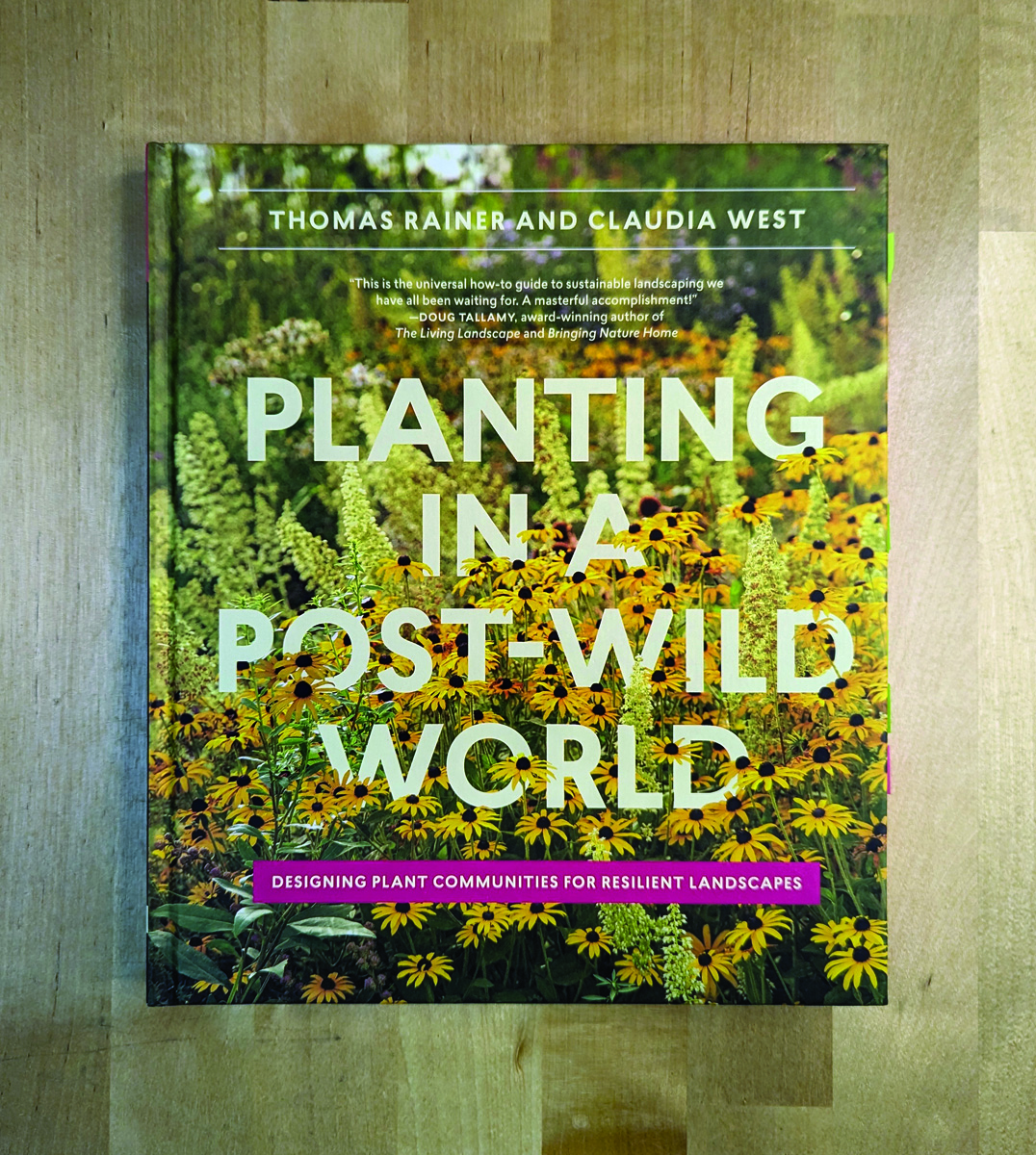
Planting in a Post-Wild World: Designing Plant Communities for Resilient Landscapes
Fine Gardening receives a commission for items purchased through links on this site, including Amazon Associates and other affiliate advertising programs.
Featuring gorgeous photography and advice for landscapers, Planting in a Post-Wild World by Thomas Rainer and Claudia West is dedicated to the idea of a new nature—a hybrid of both the wild and the cultivated—that can nourish in our cities and suburbs.
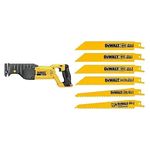
DeWalt Variable-Speed Cordless Reciprocating Saw with 6-Piece Saw Blade Set
Fine Gardening receives a commission for items purchased through links on this site, including Amazon Associates and other affiliate advertising programs.
You can fit a variety of blades to this saw to cut fallen branches or prune larger limbs from trees in a pinch. It’s fast, tough, easy to use, and extremely versatile.
– 18.31 x 6.13 x 4 inches
– 1-1/8-inch stroke length
– Variable speed trigger with 0-3000 spm
– DW4856 Metal/Woodcutting Reciprocating Saw Blade Set, 6-Piece
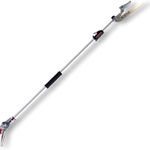
ARS Telescoping Long Reach Pruner
Fine Gardening receives a commission for items purchased through links on this site, including Amazon Associates and other affiliate advertising programs.
Telescopes from 4 to 7′. Cut and Hold (160) Blades. Drop forged blades for unsurpassed long lasting sharpness. Lightweight, 2.3 lbs., for continued use. Perfectly balanced for easy pruning.

